

AAPM NEWSLETTER July/August 2023 | Volume 48, No. 4 IMPROVING HEALTH THROUGH MEDICAL PHYSICS AMERICAN ASSOCIATION of PHYSICISTS IN MEDICINE IN THIS ISSUE: ▶ President's Report ▶ Ad Hoc Advisory Committee on Membership (AHCMEM) ▶ MIDRC Subcommittee Report ▶ Report From Awards and Honors ▶ AAPM Travel Award Report ▶ SCCAAPM Chapter Report ...and more! Special Interest Feature: Medical Physics Leadership Academy (MPLA)


















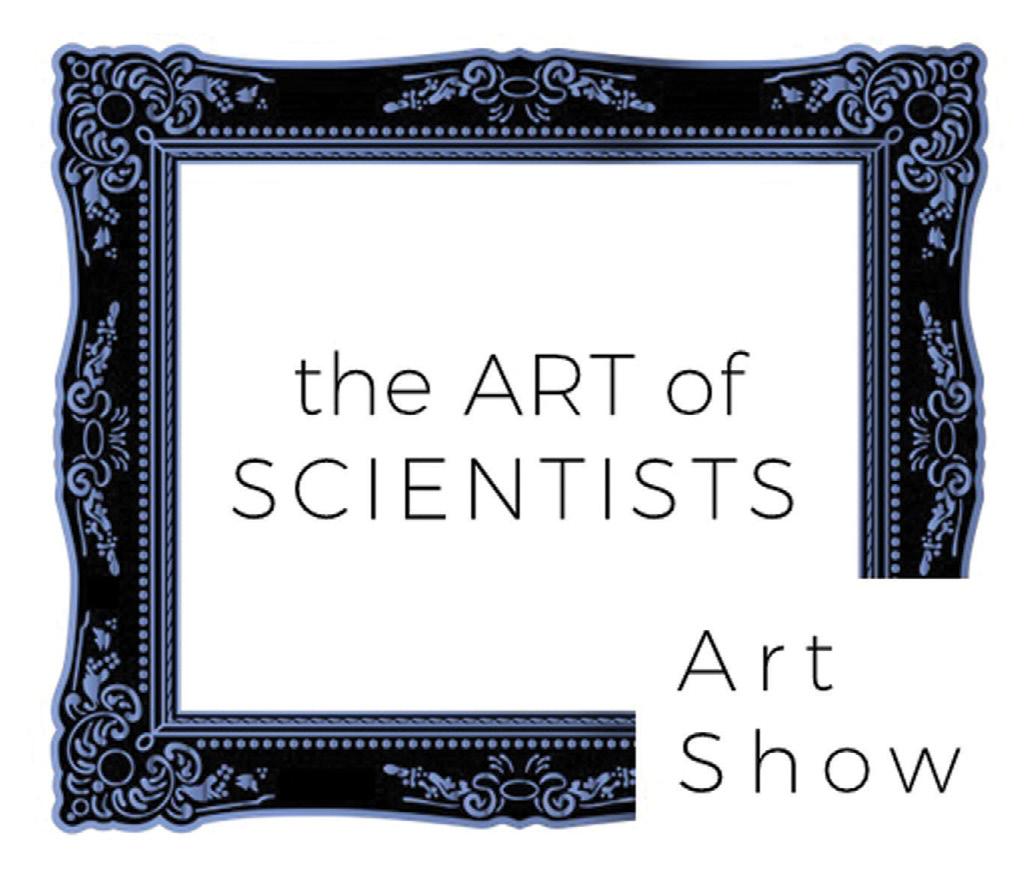
REgistration is Still Open > > #AAPM2023 Share your pictorial talents at the AAPM 65th Annual Meeting & Exhibition Artworks receiving the most votes will get a special surprise! Questions: artofscienctistsaapm@gmail.com | Information and Submissions: https://forms.gle/6uqDLhr7QLGpRG1x7
TABLE OF CONTENTS
EDITORIAL BOARD
Jennifer Pursley, PhD, Editor
Medical Physicist
Massachusetts General Hospital
Department of Radiation Oncology
55 Fruit Street
Boston, MA 02114 617-643-8273
newsletter@aapm.org
Eileen Cirino, MS
Irena Dragojevic, PhD
Yanle Hu, PhD
George Kagadis, PhD
Barbara Lilieholm, MS
Wei Liu, PhD
Joann Prisciandaro, PhD
Anna Rodrigues, PhD
SUBMISSION INFORMATION
To keep all reports uniform, we kindly request that submissions be made through a QuestionPro portal
Questions? Contact Nancy Vazquez
PUBLISHING SCHEDULE
The AAPM Newsletter is produced bi-monthly.
Next issue: September/October 2023
Submission Deadline: August 4, 2023
Posted Online: Week of September 4, 2023
CORPORATE AFFILIATE ADVERTISING
Advertising Rates & Deadlines
CONNECT WITH US!
EDITOR’S NOTE
I welcome all readers to send me any suggestions or comments on any of the articles or features to assist me in making the AAPM Newsletter a more effective and engaging publication and to enhance the overall readership experience. Thank you.
Physicists in Medicine on a bi-monthly schedule. AAPM is located at 1631 Prince Street, Alexandria,
22314
2023 | Volume 48, No. 4
ISSUE 5 Newsletter Editor's Report 7 President's Report 11 Executive Director's Report 15 Ad Hoc Advisory Committee on Membership (AHCMEM) 19 Legislative and Regulatory Affairs Report 21 ABR Report 23 Updates from ACR HQ 25 American Society for Radiation Oncology (ASTRO) Report 27 Special Interest Feature: Medical Physics Leadership Academy (MPLA) 27 News From MPLA 29 MPLA Cohorts Q&A 31 MPLA Leadership Club Program 33 Published MPLA Case Studies 36 MPLA Leadership Handbook 37 2023 MPLA Annual Meeting Activities 39 MIDRC Subcommittee Report 43 Report From Awards and Honors Committee 45 AAPM Travel Award Report 47 SCCAAPM Chapter Report EVENTS/ANNOUNCEMENTS 2 2023 AAPM Annual Meeting — See You Soon! 2023 AAPM Annual Meeting — The Art of Scientists Art Show 4 2023 AAPM Annual Meeting Student & Trainee Events 6 AAPM Mentorship Program 9 Our Condolences 10 2023 AAPM Annual Meeting New Member Symposium 13 2023 AAPM Specialty Meeting: Workshop on Improving the Teaching & Mentoring of Medical Physics 17 2024 AAPM Spring Clinical Meeting 20 2023 AAPM Working Group on Grand Challenges — Call for Grand Challenges 35 2023 AAPM Annual Meeting Review Courses 38 AAPM Career Services 42 AAPM Merchandise 44 Upcoming AAPM Webinars 46 AAPM Science Council Associates Mentorship Program 49 Focus On Our Future Attention Voting Members
AAPM NEWSLETTER is published by the American Association of
VA
July/August
REPORTS IN THIS

Counting Down to the AAPM 65th Annual Meeting & Exhibition
NEWSLETTER EDITOR’S REPORT
Welcometo the July/August 2023 edition of the AAPM Newsletter, released just weeks before the AAPM 65th Annual Meeting & Exhibition. As I write this, the exciting and timely AAPM Summer School on Radiopharmaceutical Therapy has just wrapped up with rave reviews from attendees, and the focus at AAPM HQ is now squarely on preparations for the Annual Meeting. Learn about some highlights of the upcoming meeting in Ehsan Samei’s President’s Report and throughout the Newsletter. Every year at the Annual Meeting we celebrate new AAPM Fellows and award winners at the Awards Ceremony on Monday evening; in addition to congratulating this year’s awardees, you can read about updates to the awards selection process in Gerald White’s AAPM Awards and Honors report in this newsletter.
In this issue, the Special Interest Group feature is from the Medical Physics Leadership Academy (MPLA). They have a number of great articles on their many initiatives, including the MPLA Leadership Club Program, case studies designed to inspire professionalism and leadership thinking, and an explanation of the MPLA Cohorts Program which will enroll members for the 2023–2024 program starting at the Annual Meeting. And if you are currently in or considering a leadership position with the AAPM, keep an eye out for the MPLA Leadership Handbook which will be posted on the AAPM website. You’ll find these reports and more in the full Newsletter.
All AAPM members are encouraged to submit content and ideas for the Newsletter either directly to the Editor or through the submission link on the Newsletter page. If you have an announcement of an honor or award that you would like to share, please submit it to the Newsletter for consideration!
My goal is to have something of interest to every AAPM member in each edition of the Newsletter, and that’s only possible with the help of all members. Enjoy this issue of the Newsletter and send us your feedback and ideas for future editions. And please share the Newsletter articles you enjoy with your social media network; the Newsletter is available for all to read. ¢
Jennifer Pursley, PhD Massachusetts General Hospital
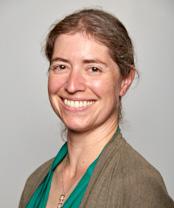
www.aapm.org | 5 AAPM Newsletter | July/August 2023 Volume 48, No. 4
AAPM Mentorship Program: Volunteers Needed!
The AAPM Mentorship Program is actively recruiting volunteers from all disciplines, work environments and education levels to serve as mentors to other AAPM members. Participation is open to any AAPM member. More details including an FAQ and sign up can be found here.
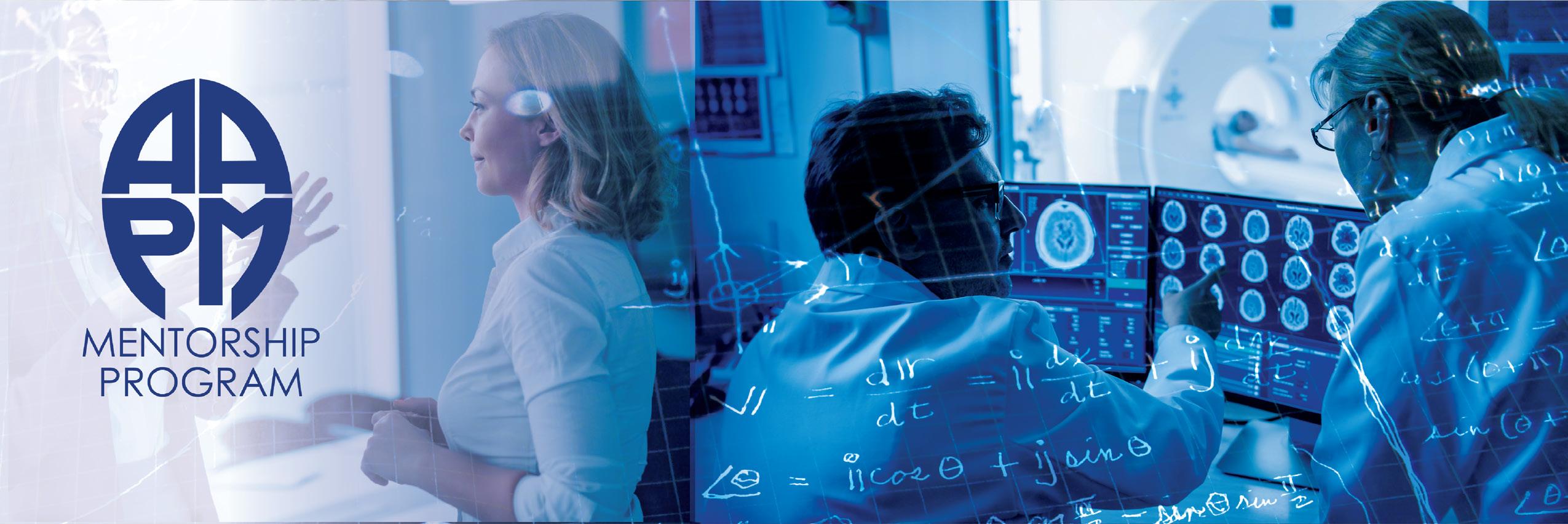
What Mentorship IS
Mentorship is one-on-one, virtual, or in person. The AAPM Mentorship Program is not just for professional mentorship, it can be used to support any form of personal or career development, including navigating an early career post-residency, being more productive in research and grant writing, how to climb the academic ladder, becoming a better educator, strategizing career changes and moves, management and leadership skills, or even retirement! The individual aims of the mentoring relationship are up to the participants.
What Mentorship is NOT
This is not a clinical training program. Mentorship o ers a personalized opportunity to work on your individual career development goals, develop new skills and expertise and access objective evaluation of your performance from an experienced member of AAPM. Mentorship can increase your networking opportunities, help to clarify your career direction, and provide support and motivation in meeting the challenges of work and home life.

Change is in the Air
PRESIDENT’S REPORT
Next AAPM
Only halfway through 2023, many changes have taken place at AAPM within these six months alone. Chief among them was the substantial news that our Executive Director, Angela Keyser, will be retiring at the end of the year. Having served the association for 30 years, 20 of them as our executive leader, she has made a remarkable impact on AAPM. We cannot thank her enough for all the energy and commitment she has extended directly to the association and indirectly to each AAPM member. We will be reflecting on that at the upcoming Annual Meeting when she will receive the AAPM Lifetime Achievement Award at the Awards Ceremony. Please be there! Yet, as we celebrate Angela and her achievements, we cannot help but observe that our AAPM, under new executive leadership, will be a different AAPM – not a radically new AAPM, I hope, but rather one that has matured and is ready to take the next steps to extend and advance the profession of medical physics. The “Next AAPM.” Change is (literally) unsettling, yet I am so excited to see how we can use this opportunity to take the AAPM into a new phase of engaging with medicine.
And speaking of change, the search for the next executive leader of AAPM is now in full swing. A new Ad Hoc Committee on Search and Transition (AHST) is now formed with seven remarkable members: Erin Angel, Sam Armato, Ashley Cetnar, Jim Dobbins (who also serves as Chair), Kristi Hendrickson, Todd Pawlicki, and Emilie Soisson. The committee is also served by two headquarters consultants, Nancy Vazquez and Michael Woodward. I am grateful for each of these individuals, who while diverse, each represent a common strong commitment to our community and our field. The committee is working closely with an executive search firm, Sterling Martin. The charge of the committee is to engage diverse stakeholders among AAPM volunteers and staff to ensure their voices, perspectives, and concerns are considered; develop a portfolio of the fundamentals, needs, and aspirations of AAPM to attract the most promising candidates; balance the immediate needs of the association and its existing and emerging strategic priorities; bring forth candidates for the Board decision; and finally help with the transition to the new director. Please be involved, be positive, and be ready to dream big for our next AAPM.
Many Meetings
The 2023 AAPM meetings have been proceeding exceedingly well, thanks to the dedicated work of our Director of Meetings, Mariana Gallo, working alongside our volunteer leaders, Robin Stern, Ingrid Reiser, and Jeffrey Moirano. The Spring Clinical Meeting was a remarkable success, with a record number of attendees and exhibitors. Thanks to its exemplary speakers, Jeff Ryckman, Chandra Kota, and Eve McDavid, the meeting’s first Presidential Symposium under the apt unofficial subtitle of "Humans Caring for Humans,"
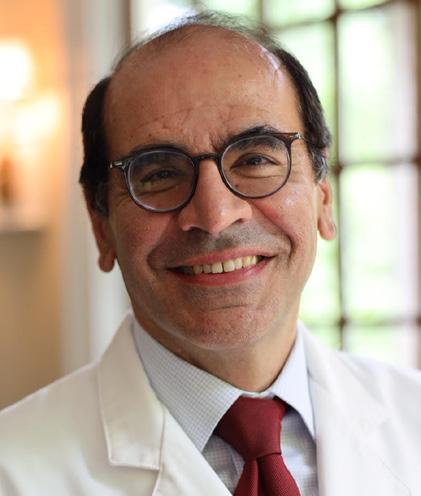
www.aapm.org | 7 AAPM Newsletter | July/August 2023 Volume 48, No. 4
Ehsan Samei, PhD Duke University
brought into focus who we are as physicists and what we bring to the table. The AAPM Summer School focused on Radiopharmaceutical Therapy, led by Robert Hobbs, Joseph O’Donoghue, and Jessica Clements. Positioned towards increased clinical use, this expanding therapy modality needs more engagement of medical physicists, and thus we know that this Summer School will lead to much-needed impact. I am excited about the timeliness of this year’s Summer School.
Additionally, our flagship Annual Meeting is right around the corner. Under the theme of The Art of Science, the Science of Care, the meeting is destined to be another great opportunity for us all to connect again in a (thankfully, mostly) post-pandemic era. The Symposium will build upon the theme we started exploring at the Spring Clinical Meeting, what it means to be humans caring for humans, and how the seemingly disparate pursuits of art, science, and medicine echo the foundational quest of humanity for purpose, meaning, and understanding, as exemplified by remarkable practitioners and thought leaders of these domains, Enrique Martinez Celaya, Kyle Myers, Richard Gunderman, and Steven Garber. The Annual Meeting will also feature many other remarkable sessions including a first Presidential Forum: Medical Physics NOW, which aims to paint a wholistic, futuristic vision of our discipline with nine TED-style talks by Erin Angel, Todd Atwood, Aldo Badano, Laura Dawson, Maryellen Giger, Chuck Mayo, Julianne Pollard-Larkin, Jennifer Pursley, and Arman Rahmim. Please plan to join this feast of talks, and take advantage of the opportunity to renew the longstanding friendships that bind our community together.
Evolving AAPM
Many AAPM initiatives are in full swing. Among them, I highlight the foundational work of the ad hoc committees on Administrative Proficiency led by Emilie Soisson, Subspecialization and Credentialing led by Geoff Ibbott, New Science led by Jim Dobbins, and Advocacy led by Jennifer Johnson. Each of these committees are in various stages of deliberation that should come to fruition later this year. I cannot wait to see the fruit of these deliberations, as we saw for the ad hoc on Membership led by Russ Tarver earlier this year, providing a solid proposal to modernize and simplify our membership categories.
One more area that is also emerging for us is a renewal of
our vision for Implementation Science. What do I mean by that?
One of the blessings of the stratification of our field into research and clinical is our ability to focus on topics that we are most passionate about. The negative is that our brilliant science or technology is often shortchanged when it gets into the clinic. New technologies often have a tumultuous path to take before they are deployed optimally into practice. Researchers think their developmental work is done, vendors often do not know or have the resources to instruct clients in the best use of a technology, and clinicians are often too busy to delve into too many details. The technology gets implemented, and after some rudimentary phantom evaluation and guesswork, we get to use it on a few patients, cautiously till we gain confidence in the best protocols to deploy. In doing so, the first few patients serve as part of an “experiment” to ensure the effectiveness of the technology. This happens way too often and each medical physicist has to invent the wheel anew. Yet, recognizing the pervasiveness of this situation, we as a community need to acknowledge this new field of implementation science as a core component of our discipline, focusing on how the implementation of new technologies can be done more proficiently and efficiently. Apart from forming task groups on implementation science, a new initiative under the Science Council, Medical Physics Institute, led by Kristy Brock, Marc Mlyn, and Jan Seuntjens, is a step in the right direction to develop AAPM’s leadership and resources in this area.
Science and Society
Science at its best is a resource at the disposal of society to advance its understanding and purposes. However, in line with increasing stratifications within our public space, we have witnessed a growing distrust for science. That is partly fueled by a misunderstanding of what science actually is – a rational exploration of evidence, which by its very nature is subject to change as it progresses. But thanks to the amazing feats of science, that is not how the public likes to think of science; people assume it to have a monopoly over truth, and thus view its changing assertions as evidence of its flaws as opposed to a reflection of its very nature. While I can say more on this, the onus is on us scientists to provide a more truthful and humble reflection
8 | www.aapm.org AAPM Newsletter | July/August 2023 Volume 48, No. 4 PRESIDENT'S REPORT , Cont.
of what science actually is and how to better position it as a resource for enriching our human society. How are we doing that?
In the last few months, there have been a series of initiatives underway within AAPM to better position our science in the service of society, and reshape its perception by patients and the public at large. Radiation medicine being central to our discipline, AAPM is submitting two grant proposals. The first grant application, led by Angela Keyser and me, is being submitted to the Patient-Centered Outcome Research Institute (PCORI). This is the AAPM’s first direct effort towards Comparative Effectiveness Research. The grant aims to first understand the array of patients and stakeholders who most need information about radiation risk, and then to capture the primary communication needs, wants, barriers, and facilitators among these stakeholders when faced with clinical decisions involving medical radiation. The stakeholder map will then guide project activities, tailored
surveys, and listening-dialogue sessions to key stakeholder segments. The project builds on AAPM's long-standing commitment to safe and effective radiation use but is a first-of-its-kind effort, rooted in co-creation with patients, to most effectually support patient-provider communication and shared decision-making about radiation risk. The second grant, led by Anuj Kapadia and Julianne PollardLarkin, directed to the American Institute of Physics, aims to address the public perception of radiation, its benefits and risks, and new ways to ensure effectual communication and respect patients’ agency in their care. I am excited about these initiatives, which if received positively will enable our intelligence and expertise to gain a more favorable perception and impactful use by medicine and society.
I thank you for honoring me by reading this column. I continue to marvel at how much work is taking place within our community, and value anything that you are contributing to its future and impact. ¢
Our Condolences
Donovan M. Bakalyar, PhD
Our deepest sympathies go out to the family. We will all feel the loss in the Medical Physics community.
If you have information on the passing of members, please inform HQ ASAP so that these members can be remembered appropriately. We respectfully request the notification via email to: 2023.aapm@aapm.org
(Please include supporting information so that we can take appropriate steps.)
www.aapm.org | 9 AAPM Newsletter | July/August 2023 Volume 48, No. 4
PRESIDENT'S REPORT , Cont.
NEW MEMBER SYMPOSIUM
Tuesday, July 25, 2023 | 2:45–3:45 pm ET Room 371 (Level 3), George R. Brown Convention Center


As a new member of AAPM, it is easy to feel overwhelmed by the size and complexity of the association and to be unaware of the benefits and opportunities available to members. At this year’s AAPM Annual Meeting in Houston, we will host a New Member Symposium where you can learn more about the organization, member resources, opportunities to get involved, and about topics of particular interest to new professionals. We encourage you to take advantage of this great opportunity to learn valuable information and to grow your professional network.
Registered attendees will receive a raffle ticket. Enter to win a complimentary registration for the 2024 Annual Meeting in Los Angeles, CA!


In addition, all new members who register for the Symposium will receive a drink ticket, good for one complimentary soda or beer served after the New Member Symposium during the social with committee chairs from five AAPM Councils: Science, Education, Professional, Administrative, and International.

Get Your Picture Taken. A photographer will be available to snap a photo for your profile in the AAPM member directory.

aapm.me/annual
Information from HQ
EXECUTIVE DIRECTOR'S REPORT
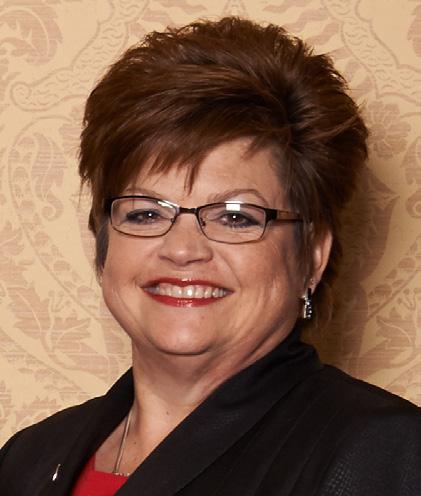
Coming Soon…. New AAPM Content Management System
Later this year, the AAPM website will undergo a significant upgrade, transitioning to a state-of-the-art content management system (CMS). As we approach the launch of this new system, we will provide timely updates regarding any potential implications this might have on your AAPM group operations. We anticipate a period of adjustment following the transition, during which certain disruptions may occur. However, please be assured that our Information Systems team will be committed to working with great diligence to swiftly address any issues that may arise.
AAPM Zenodo Community Collection
AAPM has established an AAPM HQ Zenodo Community Collection that can be used for sharing datasets relating to AAPM work. While AAPM HQ will manage and approve datasets submitted to the AAPM Community Collection page, they cannot upload datasets to Zenodo or be listed as an author.
What is Zenodo? It is an open-access digital repository that provides a platform for researchers, scientists, and scholars to preserve, share, and openly publish their scientific outputs. It was developed and maintained by CERN, the European Organization for Nuclear Research, in collaboration with other institutions. The platform ensures long-term preservation of these outputs, assigning them a unique Digital Object Identifier (DOI) to make them citable and easily discoverable. One of the key features of Zenodo is its commitment to open science and collaboration. It supports open licensing options, allowing researchers to choose the terms under which their work is shared and reused.
#AAPM2023 – AAPM 65th Annual Meeting & Exhibition
The Art of Science. The Science of Care.
It is hard to believe that we are just a few weeks out from the 2023 Annual Meeting. Pre-registration numbers are pacing ahead of the 2022 meeting and the number of corporate partners planning to participate in the exhibition is exceeding expectations. Reminder! For one year following the meeting, content will only be available to Meeting Registrants regardless of AAPM membership status. Registration for in-person or on-demand includes access to on-demand content made available 24 hours post-session.
Support Our Corporate Partners
NEW! Make plans to join us for the Meet the Vendors Reception on Tuesday, July 25, from 3:45 pm – 6:00 pm, with beer, non-alcoholic beverages, and
The AAPM HQ Team…at your service! Who does what on the AAPM HQ team? See a list with contact information and brief descriptions of responsibilities online. An organization chart is also provided. We also provide information about the diversity of our team as welll
David Crowley joined the AAPM HQ team on May 31 as the Senior Government Relations Manager. David holds a BS in Physics from Case Western Reserve University, an MS in Medical Physics from Georgia Institute of Technology, and later this year, will have his MBA from the University of North Carolina at Chapel Hill. Most recently, he served as the Chief of North Carolina’s Radiation Protection Section. A special thank you to Debbie Gilley for her work as a consultant for AAPM during the recruitment and onboarding process.
www.aapm.org | 11 AAPM Newsletter | July/August 2023 Volume 48, No. 4
Angela R. Keyser AAPM
light snacks. An online Buyers Guide is available, with information about the exhibiting companies. Exhibit hours are:
• Sunday, July 23 | 12:30 pm – 5:00 pm
• Monday, July 24 | 9:00 am – 5:00 pm
• Tuesday, July 25 | 9:00 am – 6:00 pm
• Wednesday, July 26 | 9:00 am – 2:00 pm
If your schedule allows, please attend AAPM committee meetings that may be of interest to you. The schedule is online. Remember, according to the AAPM Rules: 3.3.2
— Any AAPM member may attend any meeting of the Board, any council, any committee except the Executive Committee, any subcommittee, any working group, or any task group except for executive sessions.
2023 AAPM Annual Business Meeting and Town Hall
Room 342 (Level 3), George R. Brown Convention Center
Wednesday, July 26 | 6:15 pm – 7:15 pm
Led by President Ehsan Samei, Secretary Jennifer Johnson, and Treasurer Sam Armato, the AAPM Annual Business Meeting provides members with the opportunity to hear critical updates on the status of the Association. The 2023 Proposed Amendments to AAPM’s Articles of Incorporation and By-Laws with Corresponding Proposed Dues Changes will be discussed as well.
Immediately following the close of the Annual Business Meeting, members of the AAPM Board of Directors will host a Town Hall.
You Can Support AAPM Without Spending a Penny
When you are reading Medical Physics or the Journal of Applied Clinical Medical Physics (JACMP) online, click on an advertisement. AAPM advertisers are partners in the publication of AAPM’s journals, and the links they provide in their online advertisements provide useful information for the profession. Please consider clicking through if you see something that interests you. “Clicks” show that online advertising works and encourages advertisers to continue using online means to reach YOU, their audience.
When browsing through AAPM.org or reading the AAPM e-News, click on an advertisement. Again, “clicks” = VALUE to the advertiser. While a small percent of AAPM's revenue is currently generated from this source, we can make it grow so these opportunities provide a greater return to the organization in support of AAPM programs.
As you review the program for the Annual Meeting, plan to participate in the Vendor Track consisting of Vendor Showcases as well as Partners in Solutions and Educational Topic Specific Guided Tours. Plan to visit the Exhibit Hall and engage with AAPM Corporate Partners. It is important to remember that the fees paid by exhibitor partners to participate contribute to the overall support of the program. Attendee engagement is vital to exhibitors who want to educate you about their latest products. Show the exhibitor partners that their continued participation in AAPM meetings makes smart business sense and thank them for their support through the challenges with virtual meetings.
Employers advertise in the AAPM Career Services/ Placement Center because they know that it reaches qualified AAPM Members. When you think about changing jobs or have a position to fill, use AAPM Career Services as it provides a substantial return to the organization, supporting AAPM’s mission.
New AAPM Reports:
• Report No. 305 — AAPM task group report 305: Guidance for standardization of vendor-neutral reject analysis in radiography
• Report No. 238 — AAPM Task Group Report 238: 3D C-arms with volumetric imaging capability
Interested in Volunteering?
AAPM relies heavily on the volunteer efforts of its members to accomplish its scientific, educational, and professional missions. Without AAPM members willing to devote time and energy to advancing medical physics, AAPM would not achieve its goals. If you are interested in volunteering, please review the Committee Classifieds online to see available positions.
The Global Data and Information Exchange Committee has added a section to the AAPM Member Profile to create and maintain the database of volunteers within the AAPM membership who would be willing and able to volunteer their time and effort towards various International Council activities to address global needs worldwide. You can find this here
12 | www.aapm.org AAPM Newsletter | July/August 2023 Volume 48, No. 4 EXECUTIVE DIRECTOR’S REPORT , Cont.
Staff Recognition
Celebrating successes is vital to building a positive organizational culture. I would like to recognize and celebrate the dedication and commitment of our AAPM HQ team and especially acknowledge the team members who celebrated anniversaries in the first half of 2023. Your hard work and commitment have not gone unnoticed, and I am grateful to have you as a valued team member and colleague. Congratulations on reaching this anniversary. ¢
Nancy Vazquez 27 years of service
Zailu Gao 22 years of service

Jennifer Hudson 22 years of service
Karen MacFarland 20 years of service
Lisa Schober 18 years of service
Laurie Madden 16 years of service
Melissa Liverpool 12 years of service
Rachel York 12 years of service
Viv Dennis 11 years of service
Robert McKoy 9 years of service


Jill Moton 6 years of service
Mariana Gallo 2 years of service
AAPM Specialty Meetings Registr i nowOpen!

AAPM Newsletter | July/August 2023 Volume 48, No. 4
EXECUTIVE DIRECTOR’S REPORT , Cont.


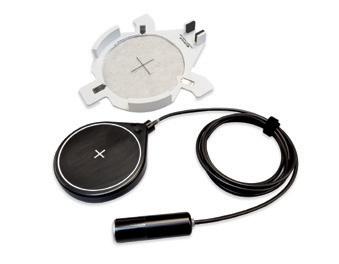






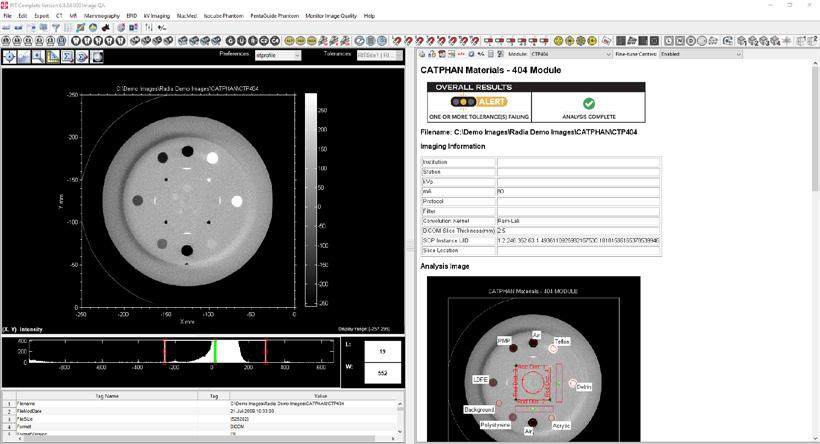

Features: • Simple to use – Accurate and reliable • Customizable Touch Screen • Wi-Fi and USB Computer Connectivity • Report Generation DAP For further details: Contact us at +1 (626) 357-7921, sales@radcal.com or www.radcal.com Need to check the performance of X-ray machines? Then the Radcal Touch meter is your tool of choice. Radcal Touches
World! Visit us at AAPM Booth #712, 7/23-7/27 vc AAPM Clr Ad 7.5x4.875_23Jun02.pdf 1 6/6/23 1:39 PM
the
Proposed Updates to the AAPM Membership Classes: Vote This
Summer
AD HOC ADVISORY COMMITTEE ON MEMBERSHIP (AHCMEM)
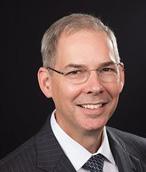
TheAd Hoc Advisory Committee on Membership (AHCMEM) was created to analyze AAPM membership and affiliation categories and recommend changes needed to meet the needs of the current membership best and situate the organization for membership growth. AHCMEM supplied its final report to the AAPM Board of Directors this spring which, after discussion, approved its recommendations to update the AAPM membership class
structure and include the corresponding dues for the new membership classes. Notice of the proposal was emailed May 26 to the AAPM membership in advance of a vote later this year.
As proposed, the ten current membership classes will be streamlined to four new classes that SIMPLIFY our membership structure, allow members to CHOOSE, and FACILITATE the future growth of our field and membership.
As a professional and scientific association, members join AAPM for access to benefits, including information about recent developments in medical physics, education, professional development, and career opportunities. In addition, members support AAPM in its efforts to promote the field while building awareness and developing relevant policies on their behalf.


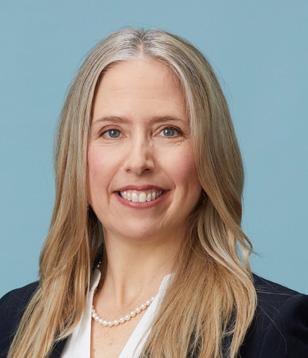
AAPM has grown with technological and complex advancements in the applications of physics in medicine. AAPM membership classes have likewise evolved to become more intricate and more categorical, resulting in an unnecessarily complicated, restrictive, and inflexible membership class structure:
Members experience rewarding careers while managing complex work, high levels of stress, and loss of autonomy in their challenging work environments.
AAPM strives to improve a key aspect of members’ professional lives — their membership in AAPM — by 1) simplifying its membership classes, 2) providing additional choices for more options, and 3) facilitating flexibility for AAPM to adapt to member needs in the future.
www.aapm.org | 15 AAPM Newsletter | July/August 2023 Volume 48, No. 4
Russell Tarver, MS AHCMEM Chair The Center for Cancer and Blood Disorders
Jennifer L. Johnson, PhD Potentia Partners
John Gibbons, PhD Ochsner Health System
Ashley Tao, PhD Gundersen Health System
SIMPLIFY | CHOOSE | FACILITATE
PROPOSED UPDATES TO THE AAPM MEMBERSHIP CLASSES: VOTE THIS SUMMER , Cont.
will enable retired members to work part-time or on a contractual basis.
Description of the New Membership Classes
The AAPM Board of Directors proposes to the members a revised membership class and benefits structure simplifying its ten current classes to four new classes — Full (with a Lifetime category), General, Associate (with a Student category), and Affiliate. These four classes with their associated dues are described:
Full generally remains the same. Dues are $490, with the Lifetime category being $0, regardless of the member’s country of residence.
General includes current Corresponding, International Affiliate, and a portion of Associate members. General members would have the option to purchase certain additional benefits offered to the Full class. General dues are $343 for members residing in the United States.
Associate includes current Junior, Resident, Student, and groups all Medical Physicist Assistants, and requires attestation. Associate dues are $196, with the Student category being $49, for members residing in the United States.
Affiliate includes existing Professional Affiliates and some Associate members. Affiliate dues are $49 for members residing in the United States.
In addition, members in the new General, Associate, and Affiliate classes would have discounted dues based on their country of residence:

Restructuring the membership classes increases efficiency in applying for and changing membership classes. Enhancing choice for a particular membership class lends value and transparency to the numerous member benefits that AAPM provides, emphasizing that your AAPM membership is connected to WHO you are professionally and WHAT you need. As the field advances, a revised membership structure will allow AAPM the agility to focus and adapt situationally to the future. For example, the proposal recommends replacing the EMERITUS class that currently requires full retirement with a LIFETIME category
Just as members decide the levels and features of services and products in daily life, members who qualify for Full would evaluate and choose either the Full or General membership class and the benefits that best suit them.
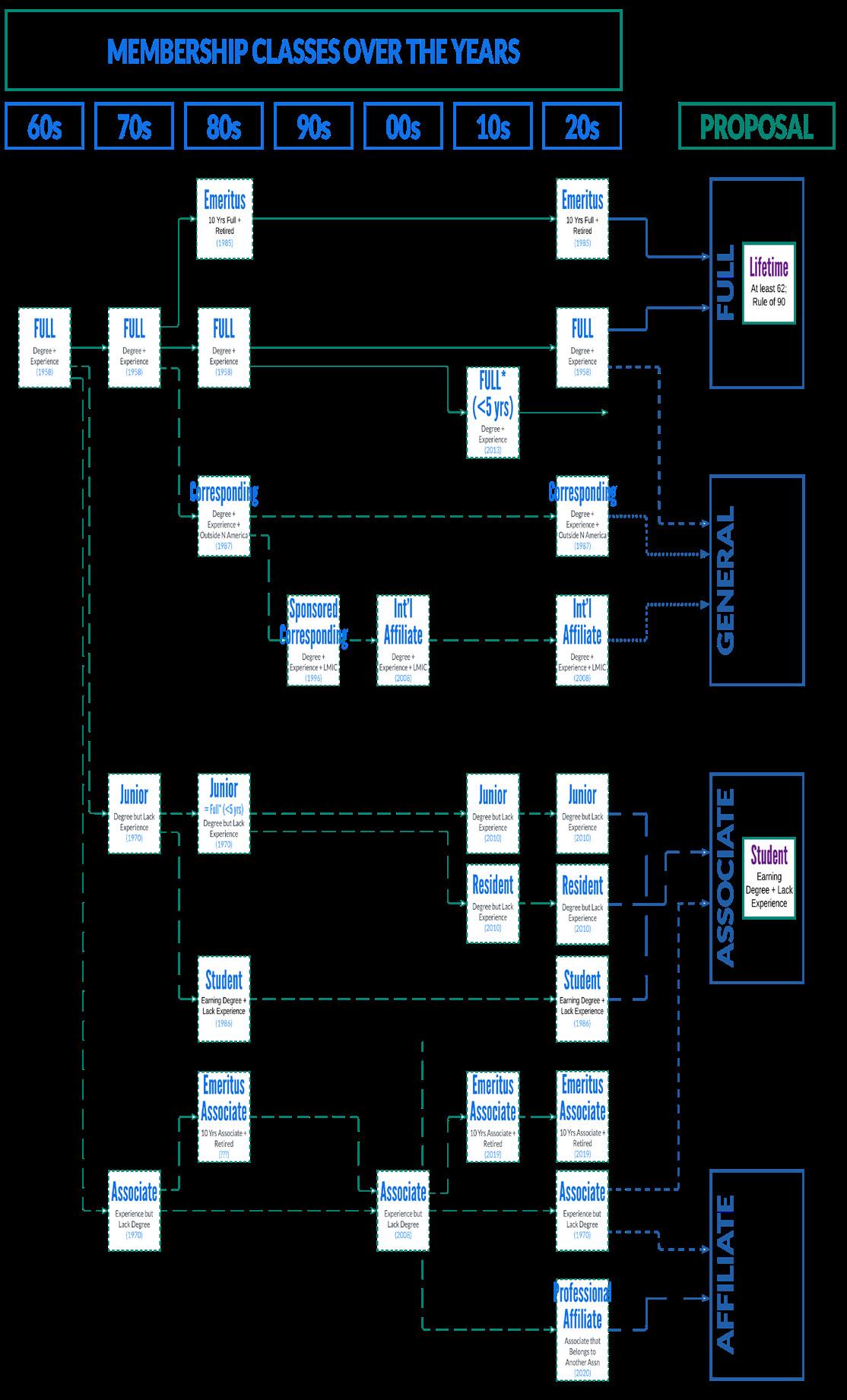
16 | www.aapm.org AAPM Newsletter | July/August 2023 Volume 48, No. 4
PROPOSED UPDATES TO THE AAPM MEMBERSHIP CLASSES: VOTE THIS SUMMER , Cont.
Voting For the New Membership Classes
AAPM will send electronic ballots to members on Wednesday, August 16, 2023, for voting. Ballots must be received by Friday, September 1, 2023. Amendments are adopted after a favorable vote of two-thirds of the received ballots. If members approve the membership class structure proposal, the AAPM Headquarters staff and volunteers will prepare updated renewal invoices, and new membership classes will take effect on January 1, 2024.
AAPM Headquarters staff and volunteers will be available to help members requiring assistance with a membership class change. Specific details will be provided at a later date.
Additional Opportunities For Information and Discussion
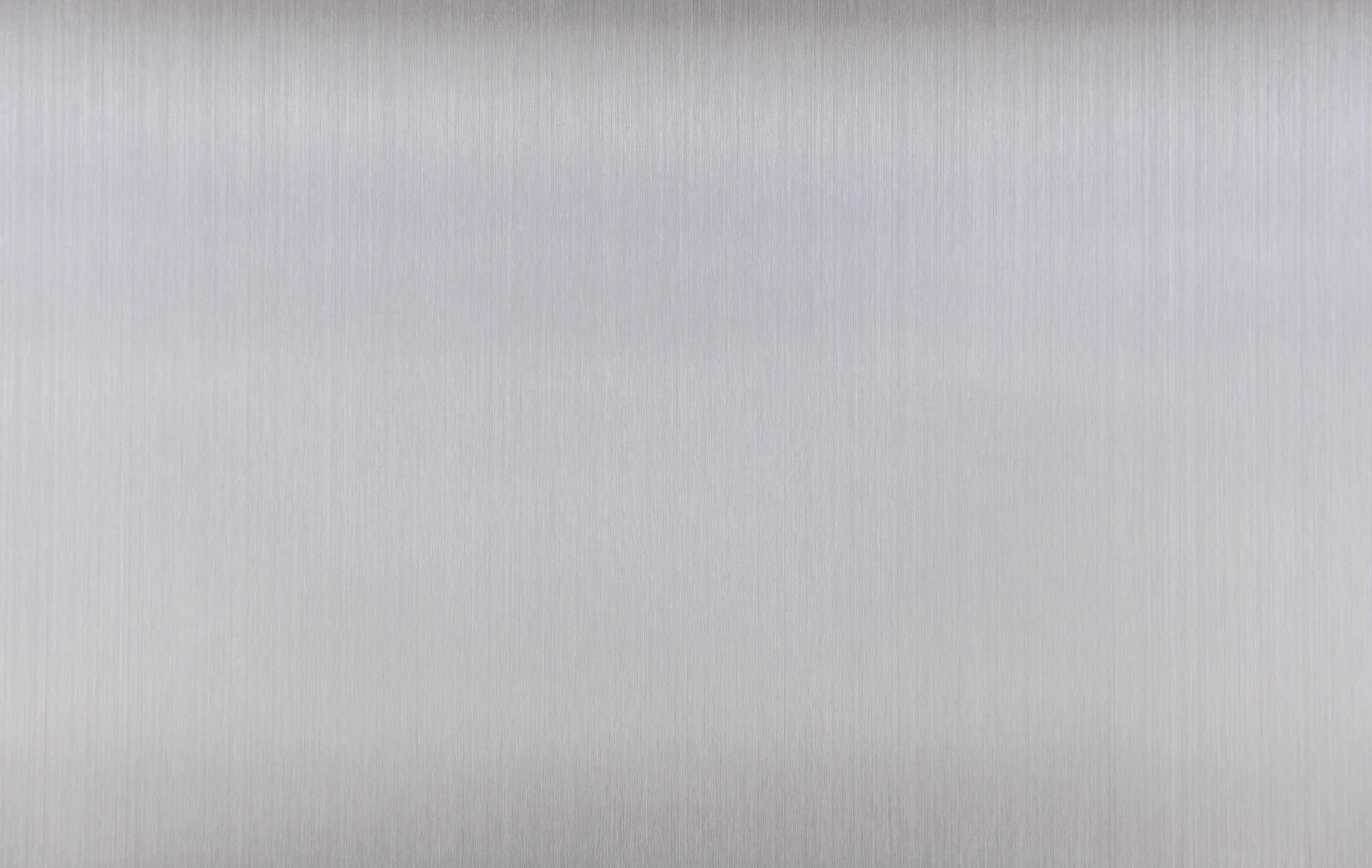
In addition to today’s informational notice, AAPM will offer several other opportunities to learn about and discuss the
• AAPM will present governance amendments, along with the proposal, as part of the AAPM Annual Business Meeting (ABM) held during the 65th Annual Meeting & Exhibition in Room 342 (Level 3) of the George R. Brown Convention Center in Houston, Texas, on Wednesday, July 26, 6:15 pm – 7:15 pm (Central Time).
• AAPM will host two Membership Class Proposal Q&A Virtual Sessions — one before the ABM on Wednesday, July 12, 1:00 pm ET and one after the ABM — but before voting opens — on Wednesday, August 9, 1:00 pm ET — to discuss the proposal with interested members.
• AAPM will share additional communication via traditional written (e.g., Newsletter) and social media communication (e.g., posts delivered via AAPM HQ Facebook, Twitter, Instagram, and LinkedIn accounts).
For complete details on the background of these important recommendations, please see the full AHCMEM report ¢
St. Louis, MO
AAPM Newsletter | July/August 2023 Volume 48, No. 4
Platform
One Database for Complete Quality Management
Get a demo at AAPM in booth 1401 >

Patient
Plan Quality Checks
Secondary Dose Calculations
Pre-Treatment QA
In-Vivo Monitoring
Machine
Standardized Routine QA
Direct Device Control
Automated Imaging, MLC & VMAT QA
Protocol-Based QA
sunnuclear.com
Conference of Radiation Control Program Directors — Annual Meeting Summary
LEGISLATIVE AND REGULATORY AFFAIRS REPORT
TheConference of Radiation Control Program Directors (CRCPD) held its 55th annual national conference on radiation control in Houston, TX, May 8 – 11, entitled "To Boldly Go — Preparing for the Future of Radiation Protection.” On the Sunday preceding the conference, the AAPM CRCPD subcommittee supported a one-day training for regulators in Audits, Safety and Quality. This training included a field trip to IROC’s calibration center and MD Anderson’s Proton Therapy facility. On Monday, AAPM provided a topical training entitled “Future Implementation of Updated Standards". Presentations were provided by Robert Stanton, Melissa Martin, Kevin Little, Jessica Clements, Kelly Kisling, and Debbie Gilley
The conference's main program included presentations by a number of AAPM members. This included "Medical Physics Perspective and Initiatives for the Future" by Dan Bourland, AAPM Chairman of the Board; "Committee on Radiation Medical Events Update" by Jennifer Elee, CRCPD Subcommittee Liaison, and Kate Hintenlang; and “AAPM Government and Regulatory Affairs Committee Update" by Sebastien Gros, Chair of the Government and Regulatory Affairs Committee.
The Nuclear Regulatory Commission (NRC) also had a significant presence at the conference. This year Katie Tapp, NRC Liaison to GRAC, provided the NRC's update on emerging technologies as well as a presentation about the NRC's medical and veterinary rulemaking activities. Also from the NRC, Duncan White talked about the future of fusion; “ABR Termination of NRC Specialty Board Recognition and Pathways to Become an Authorized Individual” was covered by Maryann Ayoade; and Celimar Valentin-Rodriguez discussed “Medical Radiation Safety Team Ongoing Initiatives.”
The CRCPD is an organization whose voting members are directors of state radiation protection agencies. It is not an advocacy or lobbying organization; CRCPD provides a forum for collaboration amongst stakeholders in radiation protection and radiological health. The organization works diligently to achieve its goals of promoting radiological health and fostering uniformity of radiation control laws and regulations across the country. AAPM values the work of the CRCPD and welcomes the opportunity to work with the CRCPD. ¢
Debbie B. Gilley, MPA Government Relations Specialist, AAPM

AAPM
(Left to right: Robert Staton, Sebastien Gros, Kelly Kisling, Kevin Little, Kathleen Hintenlang, Bette Blankenship, Debbie Gilley, and Melissa Martin.)

www.aapm.org | 19 AAPM Newsletter | July/August 2023 Volume 48, No. 4
CRCPD sub-committee members who participated on site at the CRCPD training and meeting.

New Hybrid Examiner Model Works for MP Oral Exams
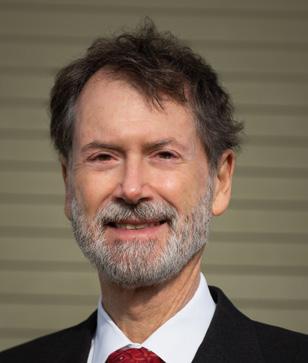
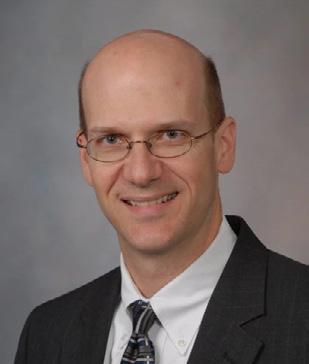

ABR UPDATE
The ABR continues to evolve its oral exam platform. This spring, oral examiners conducted exams from Tucson as well as from remote locations, resulting in the first “hybrid” exams.
In April, approximately 50 medical physics examiners assembled in the test center at ABR headquarters in Tucson. Another 30 examiners joined from their homes or offices. All candidates remained remote and connected to the exam platform from their homes or offices, as was the case in the past two years.
The benefits of the hybrid experience were immediate: Examiners who wanted to participate but were unable or unwilling to travel were able to conduct the exams as they had in the past by using the remote tools. Examiners who were interested and able to travel met in Tucson, where they conducted the exams in the same manner but using the ABR’s computer equipment. When not examining, examiners congregated in either a physical break room or a virtual space, where they were able to chat with colleagues, have refreshments, and share experiences (although, by policy, specific candidates are never discussed in the break room).
Prior to the exams, all examiners attended several remote training and orientation sessions. The sessions covered ABR policies and procedures addressing examiner conduct, the mechanics of the exam, and reminded examiners that the goal of the exam is captured by the ABR Mission: To certify that our diplomates demonstrate the requisite knowledge, skill, and understanding of their disciplines to the benefit of patients. These sessions were followed by exam content reviews in which examiners familiarized themselves with the exam questions to be used and, guided by the trustees, agreed on the expectations for candidate performance.
First-time examiners were required to conduct the exams in Tucson, where they could receive hands-on training from the trustees and experienced examiners and could receive constructive critiques on their exam methods during breaks. This interaction was seen as extremely valuable by the new and experienced examiners. Similarly, the trustees and the Associate Executive Director (AED) observed all examiners, as has always been the case, and were able to provide feedback in person to examiners on-site in Tucson or by a private conversation in the virtual break room for examiners who were remote.
The exam used ABR’s new platform, “Orals 2.0,” which contained numerous improvements over the earlier version. The most visible and most highly appreciated improvement was the integration of the audio and video function directly into the platform. Another goal was to ensure that candidates received the same experience whether their examiners were in Tucson or another location.
Some examiners traveled to Tucson for the recent ABR oral exams, while others examined from other locations. The hybrid model was seen as a great success. The ABR's Mission is "To certify that our diplomates demonstrate the requisite knowledge, skill, and understanding of their disciplines to the benefit of patients."

www.aapm.org | 21 AAPM Newsletter | July/August 2023 Volume 48, No. 4
Matthew Podgorsak, PhD ABR Trustee Roswell Park Cancer Institute
Kalpana Kanal, PhD ABR Trustee University of Washington
Robert Pooley, PhD ABR Trustee Mayo Clinic
Geoffrey Ibbott, PhD ABR Associate Executive Director
Improvements and enhancements have been made between each successive exam delivery. Connectivity and training issues experienced during previous administrations were largely resolved, and a few minor issues occurring in April were addressed promptly. In addition, a live dashboard was available during the exam for the AED to monitor examiner scoring and comments at the time of the exam. This enabled inconsistencies to be addressed immediately, rather than waiting until after the entire exam had been delivered and reports generated.
Overall, the transition to the “hybrid” exam has been a tremendous success and proof that the ABR, the Board of Governors, and the Board of Trustees listen to and act on the recommendations from diplomates and candidates. Everyone involved should be proud of these accomplishments and excited for the continued development of this process. ¢

22 | www.aapm.org AAPM Newsletter | July/August 2023 Volume 48, No. 4 ABR UPDATE , Cont.
The MP examiners who traveled to the ABR offices are seen enjoying a buffet dinner at a Mexican restaurant in downtown Tucson.
ACR Accreditation & More: Info for Medical Physicists
UPDATES FROM ACR HQ
Accreditation Fees Increase, Effective July 1, 2023
We realize that there’s never a good time to increase fees. For most modalities, this is the first fee increase in 10 years. As is the case everywhere, the costs for ACR to run its programs have increased over the past decade. Overall, fees will increase approximately 9% for all modalities except mammography and radiation oncology. There are a handful of issues related to the fees increase that I think are worth pointing out:
• ACR is a business associate with tens of thousands of US healthcare facilities. Being a trusted partner in handling PHI from so many facilities is a responsibility ACR takes incredibly seriously. Staying ahead of an everchanging security landscape, the ACR is working toward Health Information Trust Alliance (HITRUST) certification, implementing rigorous controls to protect sensitive information, including a more secure login process with multi-factor authentication.
• Facilities with digital breast tomosynthesis (DBT) units no longer have to apply as two separate units for Full-Field Digital and DBT. Instead, these units now apply as a single unit with two modules. Facilities under this scenario had an FDA-approved fee decrease and are benefitting from a more streamlined process.
• The Breast MRI Accreditation Program is now a module under the MRI Accreditation Program. Facilities accredited for Breast MRI now apply under the MRI Accreditation Program at the time of renewal. This process change resulted in lower fees in addition to the benefit of a more streamlined process.
• When a single practice site location applies for three or more modalities (excluding mammography), it will receive a 10% discount on the final calculated fee for that site. In addition, the ACR offers multi-site, multi-unit pricing discounts starting at 15% for practices with 11 or more locations. For details regarding multi-site, multi-unit pricing discounts for large practices, submit a support ticket using the subject line “discount request.”
The upcoming fee increase was first announced in March of this year.
New Amendments to ACR DM QC Manual
The FDA recently approved amendments to the ACR Digital Mammography QC Manual regarding radiologist review workstations (RWS) and software updates. The new guidance provides clarification on oversight vs. onsite medical physics support for mammography equipment evaluations following RWS service events (and similar) and after manufacturer software updates. This updated guidance applies only to facilities using the ACR Digital Mammography QC Manual and will be in the form of FAQs until the manual can be revised. Download the FAQs here
Dustin A. Gress, MS Senior Advisor for Medical Physics ACR Quality and Safety
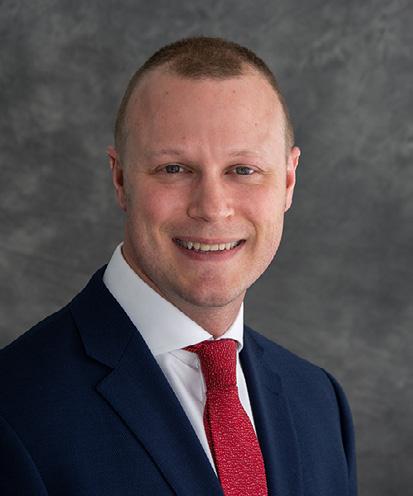
In each issue of this newsletter, I present information of particular importance or relevance for medical physicists. You may also check out the ACR’s accreditation support page for more accreditation information and QC forms. Thank You to all the other staff that keep ACR programs running and assist with creating the content in this column.
As part of the recent scope expansion of Image Wisely®, monthly educational exhibits presented by the Radiological Society of North America (RSNA) will include MR and contrast media safety content. The March exhibit featured education on safe MR imaging for patients with implanted devices. Access all of the RSNA educational exhibits provided by Image Wisely
www.aapm.org | 23 AAPM Newsletter | July/August 2023 Volume 48, No. 4
UPDATES FROM ACR HQ , Cont.
ACR-Related Sessions at AAPM

I will moderate a session on ACR updates (Monday, July 24, 7:30 am – 9:30 am, Room 351) featuring the following talks and presenters:
• Consensus Image Quality Preferences in Radiologist Subspecialties (Dustin A. Gress, MS, FAAPM)
• Stereotactic Breast Biopsy QC Manual (Katie W. Hulme, MS, FAAPM)
• Updates to ACR Manual on MR Safety (R. Jason Stafford, PhD, FAAPM)
• Helical Estimation of CTDIvol (Izabella L. Barreto, PhD)
• New RWS Requirements in Mammography (Thomas G. Ruckdeschel, MS, FACR)
A.Kyle Jones, PhD, FAAPM, Chair of ACR’s DIR Steering Committee, will moderate a session titled, “Not Just CT: The American College of Radiology Dose Index Registry” (Thursday, July 27, 1:00 pm – 3:00 pm, Room 351) with the following talks and presenters:
• Enhancements and Updates to the ACR DIR (A. Kyle Jones, PhD, FAAPM)
• Using DIR-DR Data to Gain Practice Insights (Xiang Li, PhD)
• DIR-Fluoro Phase 1 – Interventional Procedures (Kevin A. Wunderle, PhD, FAAPM)
• DIR-Fluoro Phase 2 – Diagnostic Procedures (Steve D. Mann, PhD)
• Planning for PET/CT in the DIR (Tinsu Pan, PhD, FAAPM)
• How a Medical Physicist Can Use DIR-CT to Solve Problems (Izabella G. Barreto, PhD)
• The DIR and DRL Values (Dustin A. Gress, MS, FAAPM)
• The DIR as a Tool to Drive Quality Improvement (Ryan J. Bosca, PhD)
Jun Zhang, PhD, will moderate a session titled, “QC Performance Updates of ACR NM & PET QC Manuals: What, When, and How?” (Monday, July 24, 1:45 pm –3:45 pm, Room 372), which will include presentations on the development of ACR PET and NM QC manuals by Drs. Matthew R. Palmer and Michalis F. Georgiou, respectively. ¢
AAPM Newsletter | July/August 2023 Volume 48, No. 4
Practice Accreditation and Evolving Physics Quality Assurance Practices
AMERICAN SOCIETY FOR RADIATION ONCOLOGY (ASTRO) REPORT
The value of achieving accreditation is significant for oncology practices as well as patients. For those who have been through an accreditation process and site survey, there is a general feeling of accomplishment. The accreditation process allows facilities and staff to fully evaluate their program on a different level than most routinely do. The ultimate goal of accreditation is to improve program quality and patient safety. Accreditation evaluates many aspects of a clinical practice, and one of the largest areas of review involves the medical physicist and all physics-related functions within the department. This can place a significant burden on the physics team.
A physics quality assurance (QA) program is very complex and can vary widely between practices. Adding to the challenge is that various state, federal and local authorities can require different standards for oncology practices. When a practice seeks accreditation, it is important for there to be an in-depth understanding of the standards that are required. ASTRO’s APEx – Accreditation Program for Excellence® includes a self-evaluation process, and it is instrumental in assisting the facility with expectations and providing a method for submission for their QA program documentation.
The history of physics QA goes back longer than most of us currently practicing can remember. In the infancy of medical physics, QA programs were often practice dependent and varied greatly. As the field of medical physics evolved, AAPM formed numerous task groups to assist with developing processes and procedures for high-quality medical physics programs. These task group (TG) reports have become the basis for most QA programs as well as state and federal regulations. Listed below are task group reports that are used as the foundation for the physics-related APEx Standards.
• Treatment Planning Systems
o MPPG 5a
o TG 106
o TG 157
o TG 201
• Linac-based QA
o TG 40
o TG 142
o TG 198
o TG 51
o TG 76
o TG 224
o TG 135
o TG 148
• Brachytherapy QA
o TG 182
o TG 56
o TG 64
o TG 59
o TG 253
• Simulation QA
o TG 66
o TG 126
• Equipment-based QA
o TG 40
o TG 142
o TG 198
o TG 148
o TG 224
o TG 185
Michael Howard, PhD Tennova Healthcare

• ASTRO is proud to partner with the entire radiation oncology team to improve quality and safety for patients and staff. While every member contributes to high-quality outcomes, physicists play a pivotal role in radiation oncology practices.
• Along with other members of the patient care team, physicists assure the accurate delivery of all aspects of the treatment plan; oversee radiation safety; and implement, maintain and monitor advanced radiation treatment technologies. Given the breadth and level of work they do, it’s easy to see why physicists often lead or play key roles in practice accreditation. Visit APEx and Physicists to learn more about how APEx can help physicists enhance their current systems and processes.
• See the full list of APEx Accredited facilities
www.aapm.org | 25 AAPM Newsletter | July/August 2023 Volume 48, No. 4
AMERICAN SOCIETY FOR RADIATION ONCOLOGY (ASTRO) REPORT , Cont.
These reports are widely accepted and implemented in most clinical practices. There is one exception with regard to the Medical Physics Practice Guideline (MPPG) 5.a, which is used in treatment planning QA. The introduction of the MPPGs has been widely seen as a practical approach to implementing the TG reports. TG reports can be quite burdensome and performing all of the suggested QA can be time consuming. MPPGs focus on tests that are most impactful clinically and reduce the need to perform all aspects of QA in the same timeframe as the TG reports recommend. The consideration of the MPPGs with respect to standards is and will be under review for a period of time. Should they replace existing TG reports or support them? Should accrediting bodies reference only the MPPG? The review at ASTRO is happening now.
In addition to the evolving QA standards within AAPM and other physics organizations, there are new QA methods (hardware/software) from vendors. These new and innovative approaches have been gaining traction throughout our field. Advancements in technology have introduced new methods of IMRT and linear accelerator QA. IMRT QA has evolved from chamber and film to 2-D arrays and then to 3-D arrays. New software solutions allow IMRT QA to be measured on a daily basis through CBCT/portal imager dose reconstruction. This innovative technique has significant clinical value and will most likely result in improved patient care. However, it is important to understand how these new techniques align with existing QA expectations and accreditation standards. Linear accelerator QA is rapidly evolving through new hardware and software systems and current TG reports do not directly address these new systems. This can lead to confusion amongst facilities when updating their own QA process or going through the accreditation process. It is important to accurately describe your QA program and the systems that are being used and to confirm how these systems
comply with current APEx Standards and other guidance. Treatment planning has changed significantly over the past decade. The introduction of automated planning and clinical templates, along with other planning improvements, has led to significant variations in how facilities approach treatment planning. Current APEx Standards address all aspects of treatment planning, and one aspect of the standards that is seeing a lot of change involves the treatment prescription, along with dose constraints/objectives. APEx Standards require that all objectives/constraints be provided to the dosimetry team prior to planning. Many physicians write these values in the prescription; however, there are new software options that allow for templates to be customized by the facility for planning. These are excellent tools and can provide much more comprehensive information to the planner. In addition, these templates can provide a quick method for the physician, physicist and dosimetrist to assess the plan goals and whether they have been met or not.
APEx accreditation is valuable to radiation oncology practices. It improves program quality, which directly benefits the patient. The Self-Assessment phase of a program often leads to measurable improvement in its policies and procedures. The program review involves many aspects of the oncology practice and thus requires a “team” approach. The physics involvement is substantial and instrumental in any successful accreditation. As the physics QA program evolves, it is important to ensure it continues to comply with guidance and accreditation standards. The reality is that technology and processes improve at a faster rate than what accrediting organizations, state or federal agencies can manage. With that being said, it is important to implement these technologies in order to improve processes and, ultimately, patient care. ¢
26 | www.aapm.org AAPM Newsletter | July/August 2023 Volume 48, No. 4
Special Interest Feature: Medical Physics Leadership Academy (MPLA)

NEWS FROM THE MPLA
Cassandra Stambaugh, PhD | Tufts Medical Center
Ashley Cetnar, PhD | The Ohio State University - James Cancer Hospital
Paige Taylor, MS | UT MD Anderson Cancer Center



Dongxu Wang, PhD | Memorial Sloan Kettering Cancer Center
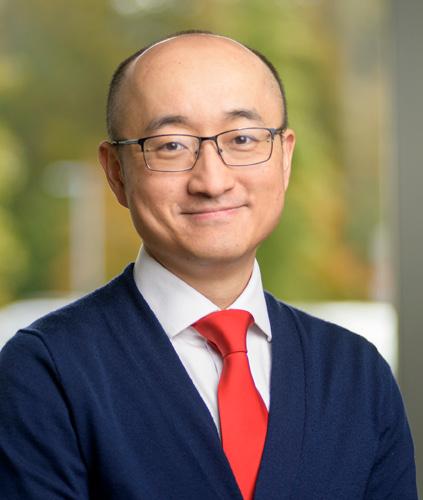
Written on behalf of the Medical Physics Leadership Academy Committee
Cohorts:
• The Fundamentals Cohort is enrolling members for the 2023-2024 program. Sign-up here
o The curriculum for the cohorts is entitled "Foundations of Medical Physics Leadership.” It includes Influencing, Conflict Management, Adaptability, Initiative, Self-Confidence, Emotional Self-Awareness, Service Orientation, Accurate Self-Assessment, Empathy, and Emotional Self-Control. Please check out the curriculum here
o If you have any questions, please feel free to contact Emily Hirata (Emily.Hirata@ ucsf.edu) and Cassandra Stambaugh (cstambaugh@ tuftsmedicalcenter.org).
• Advanced Cohorts: You must have completed the Fundamentals Cohort above to participate in an advanced cohort
o Pathways to Leadership Cohort will be launching in the fall of 2023
This program is designed to help you understand the organization, observe current leaders, and discuss leadership strategies within the volunteer organization
o The Cases Cohort is being piloted in the fall of 2023
This program will dive deeper into specific case study scenarios to further apply leadership skills and strategies.
o The Public Speaking Cohort was piloted in the spring of 2023
The AAPM MPLA Public Speaking Intensive Pilot Cohort will allow AAPM
members to develop skills in delivering prepared and impromptu speeches, facilitating meetings, providing evaluations, and listening effectively.
MPLA Resources:
• New Curriculum Organization:
o If you are looking for more resources on a specific leadership topic, the MPLA has begun organizing internal and external talks and resources on the MPLA curriculum page. Resources are organized by topic.
www.aapm.org | 27 AAPM Newsletter | July/August 2023 Volume 48, No. 4
• New MPLA case study (Part of the text below is adapted from the publication’s abstract)
o MPLA Case: How do you Lead as a Lead Physicist?
https://doi.org/10.1002/ acm2.13994
In this freshly published MPLA case, physicist David officially became the “Lead Physicist” at a community hospital newly affiliated with an extensive academic healthcare system. He believes he will be as successful as he was in his previous job when he did not yet have the official title. Yet he struggles to bring about changes and get buy-in from coworkers as a new leader. Ultimately, he feels like giving up and considers changing his job.
This work of fiction is part of a case study series developed by the Medical Physics Leadership Academy (MPLA). The intended use of this case, through group discussion or self-study, is to encourage readers to discuss the situation at hand and inspire professionalism and leadership thinking. Learning objectives and discussion questions are provided; sample answers to the discussion questions are available in the supplemental materials. This case study is written by Patricia Sansourekidou, Leonard Kim, Lee Xu, Mary Gronberg, Cassandra Stambaugh, and Dongxu Wang, on behalf of the MPLA Cases Subcommittee. To read other MPLA cases, please visit https://w3.aapm.org/ leadership/cases/index.php.
• Upcoming: New Leadership Handbook
The Leadership Handbook covers numerous topics, from the practical (setting up an AAPM Zoom call) to the professional (reviewing applications for membership) to the personal (checking if your leadership style is working). The main sections include: Picking Group Members, Setting Up Meetings, Launching the First Meeting, General Meeting Ideas, and Staying on Track. The guide links internal and external resources that can help you excel as a committee leader. The handbook will be posted on the AAPM website as a PDF document with hyperlinks. ¢
28 | www.aapm.org AAPM Newsletter | July/August 2023 Volume 48, No. 4 NEWS FROM MPLA , Cont.
Special Interest Feature: Medical Physics Leadership Academy (MPLA)
Cassandra Stambaugh, PhD | Tufts Medical Center
Ashley Cetnar, PhD | The Ohio State University - James Cancer Hospital

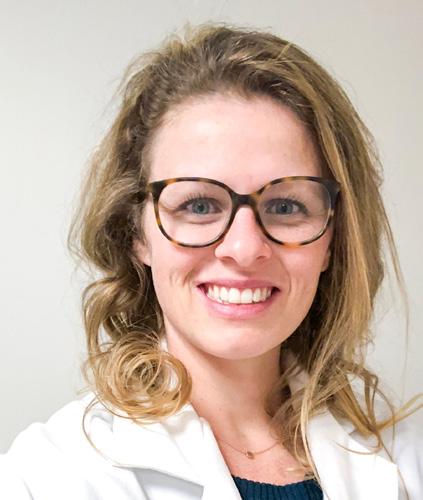 Emily Hirata, PhD | University of California San Francisco
Emily Hirata, PhD | University of California San Francisco
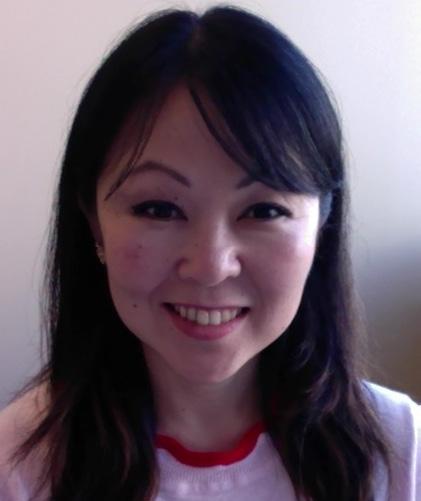
The advanced cohorts have different requirements based on the needs of the cohort. Depending on the curriculum, sessions range from 6 weeks to 12 months.
How are the cohort groups assigned?
What are MPLA Cohorts?
All MPLA cohorts are designed to provide a space where members can discuss and practice leadership topics they are learning and to create an opportunity to connect with others outside of their institution. The MPLA community subcommittee now offers a Leadership Fundamentals cohort, is beginning a Pathways to Leadership in the AAPM cohort, and is piloting two other advanced cohorts on Case Studies and Public Speaking.
What makes MPLA Cohorts different from Leadership Club?
The fundamentals cohort covers the same core ten topics each year and provides the foundational leadership skills for members to proceed to advanced leadership cohorts. Additionally, the cohorts meet regularly with the same group of
people, allowing for close connections within the group, and discussions usually go more in-depth within the protected space. While the first year of the Leadership Club presented the topics within the fundamentals cohort, they have expanded to other leadership topics. Leadership Club allows members to sign-up for topics that interest them and provides the opportunity to meet various medical physicists. Still, those members may be different from meeting to meeting.
What is the time commitment for MPLA Cohorts?
The fundamentals cohort meets monthly for one hour, for twelve sessions. We ask members to commit to actively participate for 12 months to allow deeper connection and to build a safe space for all members to speak openly. Materials are provided to the cohort members before their session to prepare for their meetings. Preparation for cohort meetings is less than one hour.
The sign-up for the fundamentals cohort is available during the month of July. Cohorts are created to minimize conflict of interest (you won’t be assigned a group with a direct colleague) and to be diverse. We strive to have as much representation from different career stages, job types (clinical, academic, imaging, therapy, and nuclear medicine), as well as gender and race as possible. This provides the cohorts with different life experiences and promotes a more robust group conversation. Cohorts are kept small to aid in members feeling welcome and provide space for all to contribute to the discussions.
Since advanced cohorts require the fundamentals cohort as a prerequisite, sign-up opportunities are sent directly to previous fundamental cohort members.
While our goal is to provide opportunities for all members to participate in the program, cohort availability is currently limited by the number of volunteer facilitators available to lead the sessions.
www.aapm.org | 29 AAPM Newsletter | July/August 2023 Volume 48, No. 4
MPLA COHORTS Q&A
Written on behalf of the Medical Physics Leadership Academy Committee
What topics are covered in the cohorts?
The fundamentals cohort covers the following topics:
• Influencing
• Conflict Management
• Adaptability
• Initiative
• Self-Confidence
• Emotional Self-Awareness
• Service Orientation
• Accurate Self-Assessment
• Empathy
• Emotional Self-Control
The advanced cohorts cover the following topics:
• Pathways to Leadership in the AAPM
o This program is designed to help you understand the organization, observe current leaders, and discuss leadership strategies within the volunteer organization.
• MPLA Cases
o This program will dive deeper into specific case study scenarios to apply leadership skills and strategies further.
• Public Speaking
o The Public Speaking Intensive Pilot Cohort will provide members with opportunities to develop skills related to delivering prepared and impromptu speeches, facilitating meetings, providing evaluations, and listening effectively.
As a result of cohort discussions, what changes have members made?
Every year, we ask the fundamental cohort members what changes they have made personally or professionally due to being part of the cohort. We get many amazing answers. A small sample of answers is presented below:
• Conflict Management/ Communication:
o Focusing more on listening to the needs of their colleagues instead of micromanaging situations.
o Fostering supportive relationships.
o Having honest and open communication
• Influencing/Initiative:
o Presenting solutions, in many cases, more than one, instead of complaining about issues.
o Asking “What can I do” instead of “Why is this done this way” to focus on improving the future instead of what has been done in the past.
o Taking initiative in meetings.
• Setting boundaries:
o Learning how and when to say “No” to a request.
o Setting appropriate priorities with work and life obligations.
• Self-awareness:
o Being more aware of how the personal emotional state can impact co-workers and the clinic.
o Having awareness that different opinions are valid and should be heard.
• Adaptability: Asking adaptability assessment questions in interviews
Cohort Testimonials
“Being part of the AAPM MPLA cohort program has been such an enriching experience for me personally and professionally. Looking at topics that we as medical physicists face on a regular basis from a different perspective taught me a lot about myself and helped me grow as a team member for the staff that I work with but also as a husband and a parent. Meeting every month medical physicists from different facets of life will be something that I will cherish for a long time and I can't wait to meet them all in person at future AAPM meetings. Thank you to AAPM and the MPLA committee for giving me this opportunity.”
“It was a great opportunity to share experience and thoughts with peer physicists.”
“One of my professional goals this year was to develop some of my leadership skills, especially after taking on a new role as residency director. This MPLA cohort was so beneficial toward achieving that goal! The discussions with my cohort helped me process my thoughts on the materials in a safe, encouraging environment where everyone's voice was heard. I love that the topics and materials endure on the MPLA website so I can continue to revisit them in the future as I apply the skills I'm learning throughout my career.” ¢
30 | www.aapm.org AAPM Newsletter | July/August 2023 Volume 48, No. 4
MPLA COHORTS Q&A , Cont.
Special Interest Feature:
Medical Physics Leadership Academy (MPLA)
MPLA LEADERSHIP CLUB PROGRAM
Ashley Cetnar, PhD | The Ohio State University - James Cancer Hospital
 Written on behalf of the Medical Physics Leadership Academy Committee
Written on behalf of the Medical Physics Leadership Academy Committee
What is Leadership Club?
MPLA started a program in the fall of 2020 where AAPM members could join to discuss leadership topics. Leadership Club provides specific monthly resources on a topic, such as podcasts, articles, or videos for reflection and discussion questions for consideration in the context of medical physics. Topics were selected and prioritized based on MPLA needs assessments identifying the topic areas of need, including conflict management, initiative, adaptability, empathy, and emotional selfawareness. So far, sessions have been held on 25 different leadership topics with all the resources available on our website.
How has it changed over time?
The format has largely remained the same for the three years of the program. Resources are provided for review and reflection prior to the live session. Members can sign up for the session, typically held on the second Monday of the month at 1:00 pm ET. During the session, there is a brief
introduction from the topic leader as members join. The meeting is split into small groups for discussion so that participants can share ideas and learn from one another. The last portion of the session is reserved for discussion as a large group for small groups to share what they have learned or ask lingering questions to the larger group.
While the essence of the sessions has not changed over time, the program underwent a name change from “Journal Club” to “Leadership Club” to be more representative of the program.
What have we learned?
We analyzed the data for the program for the first two years. We found that 172 AAPM members registered for at least one MPLA Journal Club session, with an average registration of three sessions per person. Session registration ranges from approximately 20–60 per session. While most of the participants are Full members of the organization (69%), 24% are Residents contributing to the discussions on leadership. Of the Full members, the majority of the registrants are early- or mid-career physicists, with 70% indicating radiation oncology as their primary specialty. 54% of the registrants identify as women within the Leadership Club. Surveys are sent to participants after each session. Over the course of the first year, we received 65 survey responses. Sixty-four indicated they would attend another MPLA Journal
Club, one responded with “maybe,” and none of the respondents indicated they “would not attend another Journal Club.” 100% of participants indicated that they were able to have their voice heard when they wanted to participate during the Journal Club session. In Year 2, there were 66 survey respondents. 100% of responses indicated they would attend another MPLA Journal Club, and 100% indicated they were able to have their voice heard when they wanted to participate.
In Year 2, an additional question was asked for participants to rank on a scale from 1–5 the relevance of the Journal Club to their job, where 5 indicated the highest score shown in Figure 1. 93% of the respondents strongly agreed or agreed that the journal club content was relevant to their job.
Within the survey, there was an option

www.aapm.org | 31 AAPM Newsletter | July/August 2023 Volume 48, No. 4
Figure 1: Attendee responses for relevance and helpfulness of the Journal Club session to their job. Respondents could select from a Likert scale from 1 (terrible) to 5 (great). None of the participants indicated 1 in the data, so one is not represented on the chart.
for open-response feedback where a qualitative assessment of the program was provided. Responses were overwhelmingly positive, including comments about the usefulness of the content, the opportunity to discuss content with diverse physicists, the

organization of the sessions, and overall appreciation for the program.
How can you participate?
The MPLA Leadership Club is open to all AAPM members, and we encourage you to join to learn more
Comprehensive Quality Management Solutions
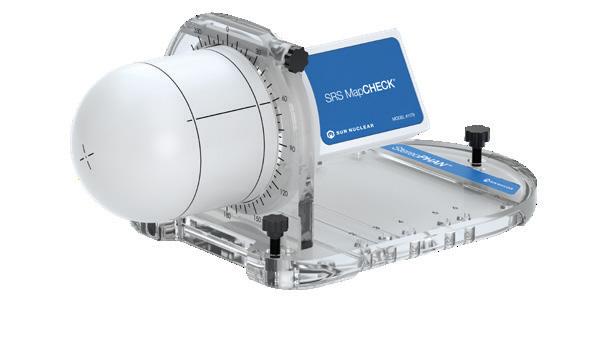
about the program. We will take a summer break, but we look forward to starting sessions again in September. Please watch for announcements from AAPM HQ for sign-ups, and we look forward to you joining us! ¢
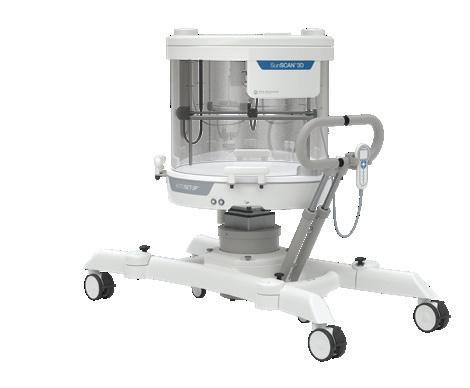
32 | www.aapm.org AAPM Newsletter | July/August 2023 Volume 48, No. 4
MPLA LEADERSHIP CLUB PROGRAM , Cont.
Get a demo at the AAPM Annual Meeting. Join Sun Nuclear in Booth #1401 throughout AAPM 2023 for in-booth talks, product demonstrations, and insights into smarter Quality Management.
SunSCAN™ 3D Water Scanning System SRS MapCHECK® & StereoPHAN SRS MR Distortion Phantom sunnuclear.com The SunSCAN 3D system is not available in all markets. CE mark pending.
Special Interest Feature: Medical Physics Leadership Academy (MPLA)
PUBLISHED MPLA CASE STUDIES
Dongxu Wang, PhD | Memorial Sloan Kettering Cancer Center
 Cassandra
Cassandra
Stambaugh, PhD | Tufts Medical Center
Sam Simiele, PhD | MD Anderson Cancer Center
• What can the physicist do to move the proposal forward?
• Besides convincing the physician leader, what else does the physicist need to prepare?
MPLA Case 2: A Junior Physicist Attempts to Improve Radiotherapy Workflow.
https://doi.org/10.1002/acm2.13188
Casestudies are educational articles that provide detailed information about an individual experience. In medicine, these studies are written to describe a specific clinical case. In business, these studies are an educational tool designed to encourage critical thinking, discussion, and the development of leadership skills. Historically, case studies have been used in MBA programs to facilitate student learning of key objectives, and only recently, through the efforts of the MPLA, have been developed and made available for medical physicists for the purpose of leadership education.
MPLA Cases Subcommittee has published several case studies for leadership and professional education. These cases can be used as educational material for graduate and residency programs, to spark
discussions within a clinical team and for personal growth. Below is a synopsis of the first five published cases. Some of the text is adapted from the published cases. Questions are presented below to encourage the reader to think about how they would handle the given situation.
MPLA Case 1: Implementing ConeBeam CT in a Community Hospital. https://doi.org/10.1002/acm2.13185. In this case, a solo therapy physicist in a rural community hospital would like to implement cone-beam CT for clinical use. The medical director is lukewarm towards the idea.
“I don't want to seem cold-hearted," said Dr. Bell. "But won't our therapists and dosimetrist have to be trained on the new equipment? That's going to be a significant cost for the hospital. I've seen it many times before. The implementation of new technology is much harder and more expensive than the vendor says it will be."
In this case, a junior physicist, Angela Rossi, has joined her hometown's cancer center. Instead of the worklife balance she had anticipated, she faces long working hours and a potentially inefficient clinical workflow. Angela thought the other LINAC could easily pick up the load. She went to ask the senior therapist on that LINAC, Linda, about the possibility.


“With just six patients left, we should be able to transfer those scheduled on the down machine to the other LINAC. The machines are the same, so could we transfer the patients?” asked Angela.
Linda seemed to agree as Angela spoke but shook her head. “I’m sorry, Angela, but that’s not how things are done around here. Maybe, just maybe, you can transfer patients, but how about therapists? Do you let one LINAC’s therapists go home?”
“Our patients value individualized care,” Linda continued, “in fact,
www.aapm.org | 33 AAPM Newsletter | July/August 2023 Volume 48, No. 4
Written on behalf of the Medical Physics Leadership Academy Committee
PUBLISHED MPLA CASE STUDIES , Cont.
our ‘continuity of care’ is formally measured by cancer center administration. We therapists have incentives to maintain our list of patients. Plus, in such a small town, patients are comfortable with the therapists that they’ve always worked with before.”
… “But ,” [Angela] countered, “I’m sure patients would prefer to get home on time and keep their regularly scheduled appointments. I’m sure you all wouldn’t mind getting home on time either,.” Angela added.
Linda laughed softly to herself, “Well, Angela, that’s just not how things are done. Therapists understand responsibility to our patients is more important than leaving on time.”
• Can she improve the radiotherapy workflow?
• Should she even attempt that, as she does not feel she is trusted by her colleagues yet?
MPLA Case 3: Don't Criticize Me in Public!
https://doi.org/10.1002/acm2.13334
In this case, a therapy physics resident could not address a physics call during patient simulation and was criticized by the supervising faculty physicist in front of the team and the patient. The resident felt humiliated; the faculty physicist was concerned about the resident's competence and behavior.
As they were finishing up the setup, Dr. Kenmore turned to Andy. “We have gone over this setup before. You should have been able to handle this, but you need to involve me prior to going off solo to POD [physicist of the day] calls so that if you can’t, you don’t delay clinical workflows.”
• How should criticism be delivered effectively to trainees?
• How should the resident and faculty physicist prepare to discuss this interaction?
Both a role-play format and a discussion format were written for this case. This case provides an opportunity to practice difficult conversations and conflict management.
MPLA Case 4: A Physicist's Consult with a Patient. https://doi.org/10.1002/acm2.13211
This case visits the physicist's role in patient interactions. In this case, a physicist, Wendi Lin, was asked by radiation oncologist Dr. Abbasi to provide a physics consult to a prostate cancer patient, Vaughn, regarding proton therapy vs. photon therapy. After the physicist's consult, however, the patient grew doubtful of having any treatment at this facility.
“I heard from Dr. Abbasi that you might have some questions regarding photon and proton therapy?”
“Not really any questions, but I don’t want photon therapy….Dr. Abbasi would like you to start treatment with photons. What are your hesitations regarding that?”
“It seems proton therapy is the newest technology—I’ve spent some time reading about it. I would like the best treatment available.” He responded.
“Yes, of course—I totally understand. The interesting thing about your case is that proton therapy isn’t necessarily better than photon therapy. With proton therapy, there is a theoretical benefit in normal tissue sparing, but
there really hasn’t been anything definitive to show this. Like you mentioned, it is a newer technology, and because of that it also comes with uncertainties that haven’t been studied as well.” Wendi explained.
Mr. Vaughn sat up in his chair, taking a moment to adjust his posture. His demeanor seemed to change.
“What kind of uncertainties are you talking about?” he asked. “I thought protons could be directly targeted to the tumor.”
• What would you say to the patient if you were the physicist in the case?
MPLA Case 5: How do you Lead as a Lead Physicist?
https://doi/10.1002/acm2.13994
In this freshly published MPLA case, physicist David officially became the “Lead Physicist” at a community hospital newly affiliated with a large academic healthcare system. He believes he will be as successful as he was in his previous job when he did not yet have the official title. Yet he struggles to bring about changes and get buy-in from coworkers as a new leader.
Fortunately, the site passed inspection with flying colors, with everyone putting on a good show. The department's accreditation was renewed, and congratulations and acknowledgements went all around. But David knew that after the inspectors left, he still had to make sure the modified policies and procedures went into action. One morning, as he was walking past the Linac console, he overheard two therapists debating what images to take for a complicated case. David stopped
34 | www.aapm.org AAPM Newsletter | July/August 2023 Volume 48, No. 4
PUBLISHED MPLA CASE STUDIES , Cont.
and said, “Oh, we have an updated SOP for that. Didn't Mark tell you?”
The therapists paused their conversation. “What?” one of them said.
“We updated a section of the imaging procedure that exactly covers this topic for inspection,” David said.
“Oh, those were just for inspection. We weren't told to do anything differently.”
As soon as he could, David went straight to Mark's office. “You didn't tell your staff to use the new imaging procedure?”
“They're just for inspection. They aren't official hospital policies.”
• How can he bring effective change to his department?
• How would you handle conflicting priorities in your department?
All the cases have sample facilitator guides available either by request or in the published text. Interested readers may adapt the cases for their educational use. ¢

Review Courses
Already planning to register for the AAPM Annual Meeting in Houston?
Consider adding a comprehensive review course just prior to the start of the meeting. These courses provide a good review for physicists entering the specialty and physicists who would benefit from a refresher taught by experts in the field. Courses will be held concurrently on Saturday and Sunday, July 22-23.
Registration Fees are the same for In-Person (which includes OnDemand access) and On-Demand only.

www.aapm.org | 35 AAPM Newsletter | July/August 2023 Volume 48, No. 4
More Information on Course Content >> Categories and Fees >> aapm.me/annual | #aapm2023
Special Interest Feature: Medical Physics Leadership Academy (MPLA)
MPLA LEADERSHIP HANDBOOK
Paige Taylor, MS | UT MD Anderson Cancer Center
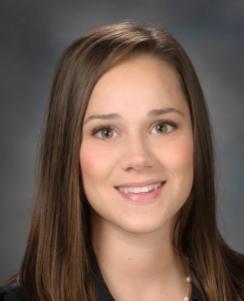
Leadership: it’s one aspect of a medical physics career that is seldom covered in graduate programs.
It’s not an exam topic on the ABR or part of state licensure. It’s typically not covered in clinical training. And yet many medical physicists find themselves in leadership positions throughout their careers.
One leadership position that some medical physicists aspire to is Chair of a committee, subcommittee, working group, or task group within AAPM. These positions come with much responsibility and many idiosyncrasies of working with an all-volunteer group. Until recently, there wasn’t a formal training or handbook that medical physicists could use to navigate this new position. AAPM leadership and the Medical Physics Leadership Academy (MPLA) identified this gap and sought to fill this space.
The MPLA provides a wealth of resources for medical physicists, and all focus on leadership potential and development. From these resources, like the MPLA Curriculum,
MPLA Leadership Club, and MPLA Leadership Cohorts, MPLA created an AAPM New Chair Leadership Handbook. This handbook aims to provide resources and structure for medical physicists as they step into new leadership roles within AAPM. The handbook covers numerous topics, from the practical (setting up an AAPM Zoom call) to the professional (reviewing applications for membership) to the personal (checking if your leadership style is working). The main sections include: Picking Group Members, Setting Up Meetings, Launching the First Meeting, General Meeting Ideas, and Staying on Track. The handbook links internal and external resources that can help you excel as a committee leader. The handbook will be posted on the AAPM website as a PDF document with hyperlinks.
While the handbook is geared toward leadership of AAPM committees, it provides numerous tips and resources that can be useful while navigating a new leadership position within your institution or other professional societies. For example, there is a section on Creating Group Diversity. This section includes recommendations on EEOC hiring practices to avoid substantially disparate selection rates of members of different races, sex, or ethnic group. Alongside the
recommendations are a concrete example and an infographic from a presentation by Titania Juang
In addition, several sections of the handbook could be of interest to those involved with AAPM committees not at the Chair level or those interested in joining an AAPM committee. For example, there is a section on Understanding the Roles of Voting Members vs. Guests/Consultants. This section explains the different committee membership types and typical roles of the different groups. This may particularly interest trainees or emeritus AAPM members who wish to participate in committees.
Many thanks to the Medical Physics Leadership Academy Committee, with generous brainstorming and editorial support from Ashley Cetnar, Leigh Conroy, Colleen Foote, Jennifer Johnson, Jeff Limmer, Horacio Patrocinio, Ashley Rubinstein, Daniel Scanderbeg, Samantha Simiele, Cassandra Stambaugh, Emily Thompson, and Nicholai Wingreen
Wherever you may be in your leadership trajectory, know that many people and resources are here to support you and ensure your success. We encourage you to check out the Leadership Handbook and the numerous resources and communities available on the MPLA website. ¢
36 | www.aapm.org AAPM Newsletter | July/August 2023 Volume 48, No. 4
Special Interest Feature: Medical Physics Leadership Academy (MPLA)

2023 MPLA ANNUAL MEETING ACTIVITIES
Dongxu Wang, PhD | Memorial Sloan Kettering Cancer Center Cassandra Stambaugh, PhD | Tufts Medical Center

Written on behalf of the Medical Physics Leadership Academy Committee Case Study Educator’s Workshop
Sunday, July 23, 2023, 10:00 am – 12:00 pm. GRB Convention Center, Room 370C.
In this workshop, MPLA will introduce the case study methods to educators to fulfill their programs’ ethics, leadership, and professionalism education needs. Hands-on practice will be conducted. Space is limited; please register here
Questions? Please email Cassandra Stambaugh (Cassandra.Stambaugh@ tuftsmedicine.org) or Dongxu Wang (WangD2@mskcc.org).
Professional Symposium Session: From Couch to Committee: Joining, Leading, and Thriving with Life-Work Balance
Monday, July 24, 2023, 7:30 am –8:25 am, GRB Convention Center, Room 371. From Couch to Committee: Joining, Leading, and Thriving with Life-Work Balance
This session will review committee membership roles (such as guest, member, liaison, etc.) and expectations in these various roles. The audience will discover resources and pathways to connect with AAPM committees, such as AAPM website tools, committee classified ads, and committee social media accounts. After understanding the resources within the organization, it is valuable to understand the structure of the AAPM. We will introduce an upcoming MPLA Cohort curriculum that will help incorporate these tools while building a perspective of organizational awareness from leaders within the organization. Aspects include identifying SMART goals for leading within the organization, understanding critical areas for contribution, leadership observations, and question-and-answer sessions with AAPM leaders. Leaders within the organization lead these cohorts intending to provide group mentorship for growing leaders.
Once the resources and structure of AAPM committees are understood, it is necessary to do an accurate self-assessment to decide which positions within AAPM will be a good fit. Methods for determining personal strengths and needs for paid vs. volunteer positions will be explored. Additionally, longitudinal goals & personal drive, desired levels of service at different career points, and non-professional interests will be
discussed. Tools to avoid burnout and promote success, such as effective boundary setting, work organization and management, and reflection, will be presented.
Professional Symposium Session: Are these stories real? A case study workshop on leadership, professionalism, and ethics education. Tuesday, July 25, 2023, 7:30 am –9:30 am, GRB Convention Center Room 340. Are These Stories Real? — A Case Study Workshop for Leadership, Professionalism, and Ethics Education
In this session, the case study method will first be introduced, with a brief recap of past AAPM efforts in using the case study methods in professional education. The experience from a large academic medical physics program will be shared. Finally, the audience will be invited to participate in a live case discussion for a scenario adapted from one of the MPLA’s published cases.
MPLA Cohorts Social
Tuesday, July 25, 4:30 pm–6:30 pm, The Rustic - Houston
If you have participated in an MPLA Cohort, join us for dinner and prenight out socializing with other cohort members. Information to purchase tickets and sign-up for the social will be emailed before the annual meeting. ¢
www.aapm.org | 37 AAPM Newsletter | July/August 2023 Volume 48, No. 4
Connecting medical physicists with the finest jobs

Find your future at aapm.org/careers
Report from the Medical Imaging and Data Resource Center (MIDRC)
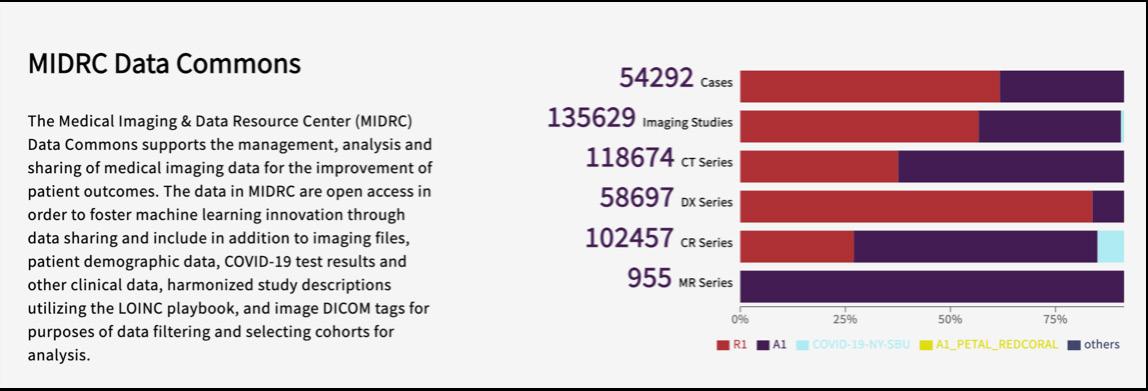
MIDRC SUBCOMMITTEE REPORT
TheMedical Imaging and Data Resource Center (MIDRC; midrc. org) has become a national resource for medical imaging AI research and continues to receive additional funding from NIH’s National Institute of Biomedical Imaging and Bioengineering (NIBIB).

While currently housing both lung radiographs and CT imaging data, MIDRC is also now accepting brain & cardiac MRIs and ultrasounds to further research of long-COVID, as well as other diseases in the future.
Maryellen Giger, PhD
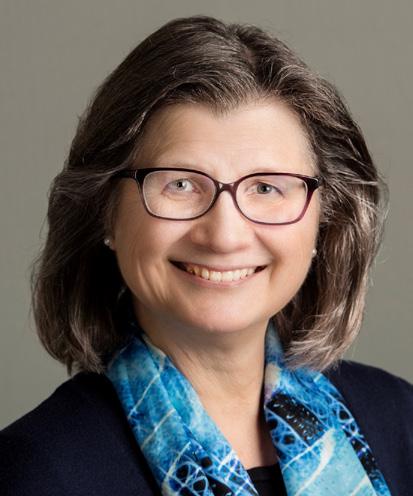
University of Chicago
Paul Kinahan, PhD
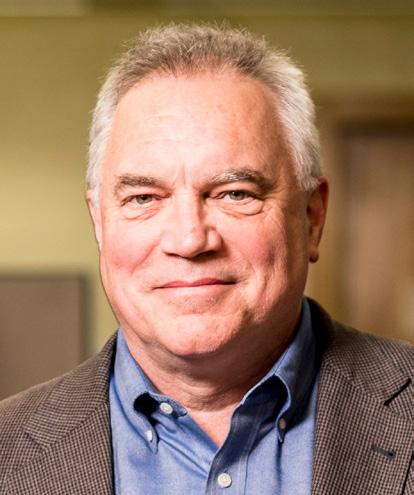
University of Washington
Please direct inquiries to: Maryellen Giger, PhD, FAAPM, Paul Kinahan, PhD, FAAPM, or Emily Townley, AAPM MIDRC Program Manager
MIDRC team members continue to actively participate in open and widely advertised outreach events to inform the data science and medical communities-at large about milestones and important progress, such as quarterly MIDRC Town Halls and monthly MIDRC Seminars. You can subscribe for free to MIDRC Media's YouTube channel to view past Seminars – recent Seminar topics have included publicly available MIDRC tools and resources (like the AI/ML Bias Awareness Tool and the Performance Metrics Decision Tree, both developed by MIDRC research teams led by AAPM members) and what’s new in the MIDRC Data Explorer for cohort selection. MIDRC investigators also travel to many society meetings and symposia, and recently participated in the 11th annual Medical Imaging Technology Showcase, an event sponsored by AAPM partner, the Academy for Radiology and Biomedical Imaging Research (the Academy), on Capitol Hill in Washington, DC. While in DC, MIDRC members met with the offices of various Congressional representatives to advocate for sustained federal funding for imaging research, and MIDRC was featured prominently in the Research

www.aapm.org | 39 AAPM Newsletter | July/August 2023 Volume 48, No. 4
M. Giger
P. Kinahan
Roundtable, a meeting with Academy leadership, AAPM leadership, academic Chairs and industry partners, as well as NIH and FDA representatives.
MIDRC will have a strong presence again this year at AAPM’s upcoming 2023 Annual Meeting in Houston, TX. MIDRC investigators and AAPM members Karen Drukker, Weijie Chen, Natalie Baughan, and Nick Bevins will present at a dedicated MIDRC session as part of the Data Science track on Wednesday, July 26. The top-ranked finishers of MIDRC’s second Grand Challenge, the MIDRC mRALE Mastermind Challenge (which will supply cash awards and the unique opportunity to have winning code supported by MIDRC through the regulatory approval process) will also be announced during this session. And please stop by the MIDRC booth (Booth #400) on the exhibitor floor at any point during the week to chat with our investigators, review MIDRC materials and videos, and to learn more about our current work! Among other advances, they will discuss:
• MIDRC’s LOINC & Harmonization Processes — to help mitigate the challenge of variability in the descriptions of studies across institutions and to assist data users in cohort selection, MIDRC provides a method of standardization in harmonizing data by mapping studies to the LOINC (Logical Observation Identifiers Numbers and Codes) ontology based on the imaging modality and other metadata provided in the DICOM header.
• MIDRC’s DICOM Viewer and GitHub Repository — MIDRC has published over 130,000 free and publicly available imaging studies, along with a DICOM viewer to review individual images determined during cohort selection, with annotation and viewing tools included in the viewer. MIDRC also has a GitHub repo with available code for data handling tools and AI algorithms.
• MIDRC’s Sequestering and Task-based Distribution for Independent Testing of AI Algorithms — to enable task-specific independent evaluation of many algorithms using data from MIDRC, a sequestered commons has been created using a developed method of multi-dimensional
stratified sampling. The sequestered commons is restricted from public download access but will be used for the formal evaluation of finalized algorithms to enable translation through the FDA regulatory process.
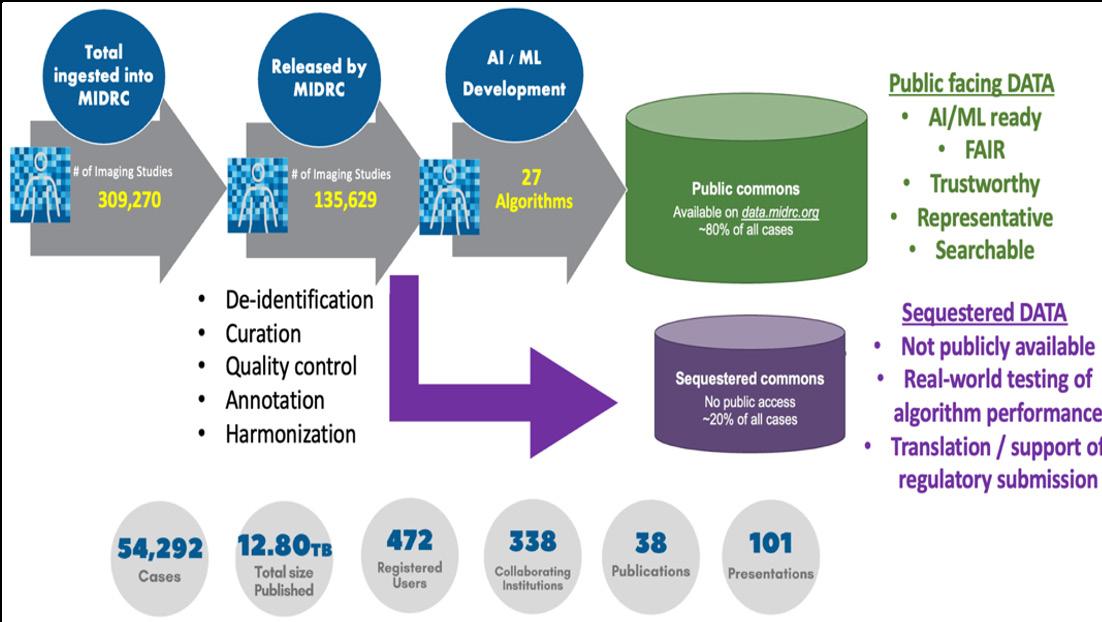
• NIH's 2023 Data Management and Sharing Policy — as part of this policy (which requires all researchers applying for NIH funding to have a plan for data management and sharing) NIH encourages researchers to select the repository that is most appropriate for their data type and discipline. MIDRC is listed as one of the NIH-supported repositories recommended as a commons for sharing scientific data.
• MIDRC’s Interoperability with NIH’s BioData Catalyst and N3C Repositories — a critical effort in realizing the potential of multimodal data machine learning in healthcare is the linking of data sources containing imaging, clinical (e.g., EHR), and demographic metadata. This linking of data types is happening between MIDRC and other repositories, such as BioData Catalyst, the Early Treatment of Acute Lung Injury (PETAL) commons and N3C, using crosswalking achieved with the Gen3 (at the University of Chicago) software development kit allowing for the retrieval, matching, and combining of data from multiple commons.
AAPM is proud to be one of the three co-leaders, along with RSNA and ACR, in this effort, which has received to date over $30M from NIBIB. But MIDRC also continues
40 | www.aapm.org AAPM Newsletter | July/August 2023 Volume 48, No. 4 MIDRC SUBCOMMITTEE REPORT , Cont.
to need your help in the form of medical imaging and metadata contributions, as it creates a diverse data collection with efforts to mitigate bias in data collection and algorithm development. The data from your community hospital, healthcare system, or academic institution can become an important part of this curated commons! MIDRC provides resources and support to ease
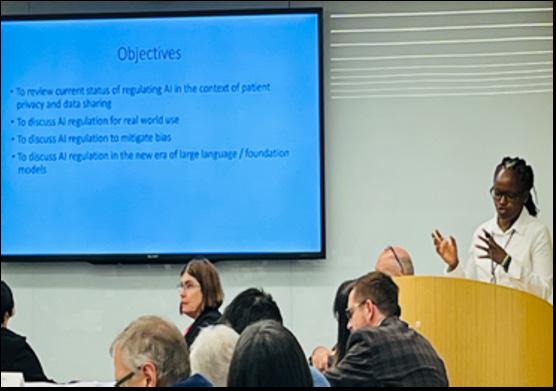
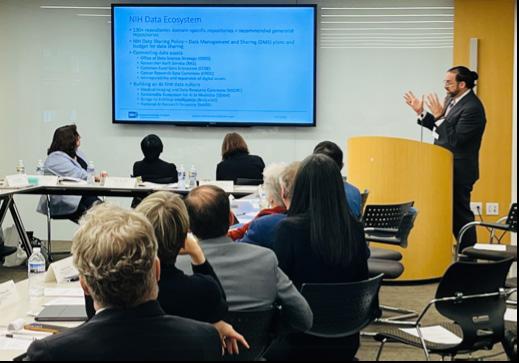

the administrative burden of contributing — as a start, you can discuss a data contribution with any member of the MIDRC Subcommittee, review MIDRC’s Data Contribution 101 Guide, or complete this preliminary data contribution inquiry form. Thank you for your continued support of this important work. We look forward to seeing you at the upcoming Annual Meeting! ¢


www.aapm.org | 41 AAPM Newsletter | July/August 2023 Volume 48, No. 4
MIDRC SUBCOMMITTEE REPORT , Cont.
Dr. Maryellen Giger and Dr. Caleb Gilchrist (staff, Rep. Danny Davis, D-IL)
AAPM and NIH staff with, second from left, MIDRC investigator Dr. Jordan Fuhrman; center, Dr. Maryellen Giger; 3rd from right, Christine Cooper (NIH’s National Institute of Biomedical Imaging and Bioengineering)
Academy Roundtable meeting; l to r, Dr. Erin Angel (GE Healthcare), Dr. Maryellen Giger (UChicago/ MIDRC), Dr. Kris Kandarpa (NIH)
NIH Data Scholar (Office of Data Science Strategy) and MIDRC collaborator, Dr. Brad Bower, speaks to the Research Roundtable attendees
MIDRC investigator Dr. Judy Gichoya (Emory University) speaks at the Research Roundtable
AAPM Mer dise
The first in a selection of AAPM branded merchandise, these high-quality scarves and neck ties are made in America and custom-designed especially for AAPM. Every creation is handmade to your order preference. Choose from rectangular and square scarves made from very fine, lightweight silk-like poly chiffon, as well as neck and bow ties made with custom milled poly twill fabric that has the look and feel of silk with minimal sheen.

Order Yours Today!
www.aapm.org/merchandise
Because AAPM branded merchandise is made to order, please allow 4–5 weeks for delivery

On display the
65th annual meeting & exhibition
AAPM Awards and Honors — A Look Behind the Scenes
REPORT FROM AWARDS AND HONORS COMMITTEE
Wehave all enjoyed the opportunity to attend the annual AAPM Awards and Honors event at the Annual Meeting. It’s an opportunity to meet with old friends, engage with new friends and honor our colleagues who have made outstanding contributions to the Association and to the profession. The evening is the most visible part of the Awards and Honors process. As you might suspect, there is a significant infrastructure working all year in the background to bring this all to reality. I have a few comments on the process that I hope you will find interesting.
This year the software that drives the nomination process and provides for the collection of nominations and supporting documentation will change. Heretofore we have used in-house software to provide this support, but AAPM staff has determined (and the Awards and Honors Committee has agreed) that migrating to a software package developed and supported by an outside vendor (OpenWater Software) will be both more cost effective and flexible. The interface seen by nominators and nominees will have a similar structure to the old system with some enhancements, most notably a direct link to the AAPM database for Fellow nominees to access their history of AAPM service. This software change has also offered the Committee the opportunity to reflect on some aspects of the nomination process, and in doing so, we have decided to omit the “endorsement” feature that had been associated with nominations for the Coolidge, Quimby, and Williams awards. Nominators will continue to submit a nomination letter and solicit up to four additional supporting letters, but the software will no longer support the addition of individuals to “endorse” the supporting letters. In recent years the number of “endorsers” for a nominee has grown significantly, leading to a diminution of the gravity of the endorsement offering.
The new software package is in the final stages of development. The readers of this article will be acutely aware of the potential for software development and testing to be associated with delays, and so will not be surprised to learn that, at the time of this writing, a firm date has not yet been established for the opening of the nomination system. We are hoping for a mid-August to lateAugust opening date for the submissions, with a closing date of September 29, 2023. Stay tuned for more announcements related to these details.
Mechanics of the process aside, I am often asked how one might enhance the likelihood that a member will be successful in the award pursuit. There are a number of features that may enhance the effort, not all applicable in each situation, but worth considering should you want to see one of your colleagues on the stage at the ceremony.
• Make the nomination! The Committee cannot consider candidates who are not nominated. While this seems obvious, I am frequently asked why a particular person has not received an award, or why members of a group seem underrepresented in the roster of awardees. If they are not
Gerald A. White Jr., MS Medical Physics Services

www.aapm.org | 43 AAPM Newsletter | July/August 2023 Volume 48, No. 4
nominated, they can’t be awarded. It’s like the lottery: you must buy a ticket to have a chance to win.
• Carefully read the nomination criteria for the award here and select a candidate who fits the descriptors at an outstanding level.
• Select nominators and authors of supporting letters who know the candidate well and are familiar with their work. It is helpful if each of the letters offers an emphasis on a different part of the nominee’s awardrelated characteristics, although some overlap is to be expected.
• Recognize that all AAPM awards and honors are of AAPM. An outstanding and exceptional level of service to the Association is an essential characteristic of awardees. Potential nominees may have notable research, education or professional achievements, or
exemplary service to other organizations, but without AAPM service that sets them apart from typical AAPM members the nomination may not be successful.
• When composing supporting letters for Fellow nominees and referencing service on AAPM committees, task groups, etc., it will be helpful to specifically describe the contributions of the individual to the work of the group. We are all aware that within a roster, not all member contributions are equal, and some are (at best) perfunctory. If you have chosen to support a nominee, this is the opportunity to fully expound on features of their work that have led you to recognize that they are truly outstanding in the field of their peers.
As always, I remain open to questions, suggestions, and comments. Please feel free to contact me at gerald.white@mindspring.com. ¢
Upcoming AAPM Webinars
•AAPM Webinar Series on MP3.0
Transformational Medical Physics
Episode #19: ACR Data Science Institute
Overview and Current Initiatives
July 11 | 12:00 pm ET

•AAPM Webinar Series on Advances in Medical Physics
Webinar #34: Debate: AI-based autosegmentation: Slow Adoption vs Pivot Opportunities to Increase Capacity for Adaptive Radiotherapy?
August 10 | 12:00 pm ET
•Pregnant Patients and Radiation — A Modern Refresher August 24 | 12:00 pm ET
•2024 Medicare Policy Proposals August 29 | 12:00 pm ET
44 | www.aapm.org AAPM Newsletter | July/August 2023 Volume 48, No. 4 REPORT FROM AWARDS AND HONORS COMMITTEE , Cont.
for these events here under the “Webinars” tab!
Register
Early Career Investigator in Imaging Travel Award Recipient Experience
AAPM TRAVEL AWARD REPORT
Lastspring, I had the honor of being selected by the AAPM Science Council and the Research Committee to be the 2023 AAPM representative in the Council of Early Career Investigators in Imaging (CECI2) program, sponsored by The Academy for Radiology and Biomedical Imaging Research. The CECI2 program is split into two levels; Level One sees approximately 40 members from radiology departments and imaging societies across the country participate in online training and mentoring sessions once a month on topics ranging from settling in as a faculty member to writing your first NIH grants. Roughly 20 CECI2 members who were then invited to participate in Level Two of the program had the opportunity to travel to Washington, DC, in May to meet with Congressional offices to advocate for NIH and NIBIB funding, present on our own work at the Medical Imaging Technology (MedTech) Showcase on Capitol Hill, meet with academic and industry leaders in radiology, and finally spend a morning at the NIH Clinical Center.
Taking meetings in both the House and Senate representative offices was a unique and valuable experience. The meetings generally took place with staffers who focus on healthcare policy, and they were very interested to hear about research activities taking place in their districts. By providing personal examples of how federal funding and the NIH impact our field and our careers, we can initiate a relationship and have an impact on the prioritization of research funding. I left these meetings hoping to maintain contact with these offices, and I hope to reach out to them again in the future.
One of the best things about this program was the chance to network with leaders in imaging research and industry virtually throughout the year and then in person in DC. The highlight of our day on Capitol Hill was the MedTech event, where we presented our own work to our peers and staffers. It was exciting to hear about new innovations in imaging and connect with people from across the country in radiology and medical physics! Being part of the CECI2 Class of 2022–2023 was an excellent experience, and I look forward to more engagement in the near future! ¢
Megan C. Jacobsen, PhD University of Texas MD Anderson Cancer
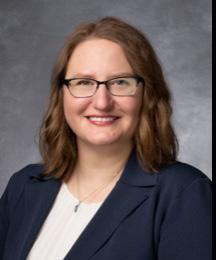
AAPM is now accepting nominations for 2023-2024 CECI2 applicants! Details and the nomination form are HERE, under '2023 AAPM/Academy's Council of Early Career Investigators Opportunity'.
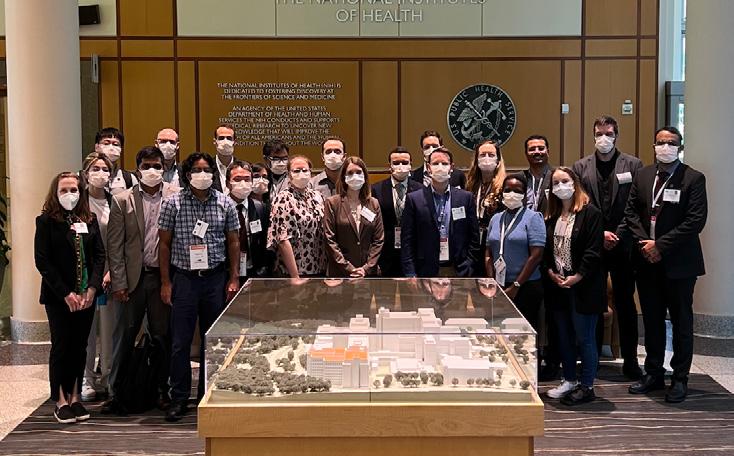


www.aapm.org | 45 AAPM Newsletter | July/August 2023 Volume 48, No. 4
Dr. Jacobsen presents on her work during the MedTech Showcase
The 2023 CECIs on Capitol Hill
The 2023 CECI class visiting NIH
AAPM SCIENCE COUNCIL ASSOCIATES
Mentorship Program
This program has been established to recognize and cultivate outstanding researchers at an early stage in their careers, with the goal of promoting a long-term commitment to science within AAPM. The program uses the process of “shadowing” to integrate the Associates into the scientific activities of the organization.


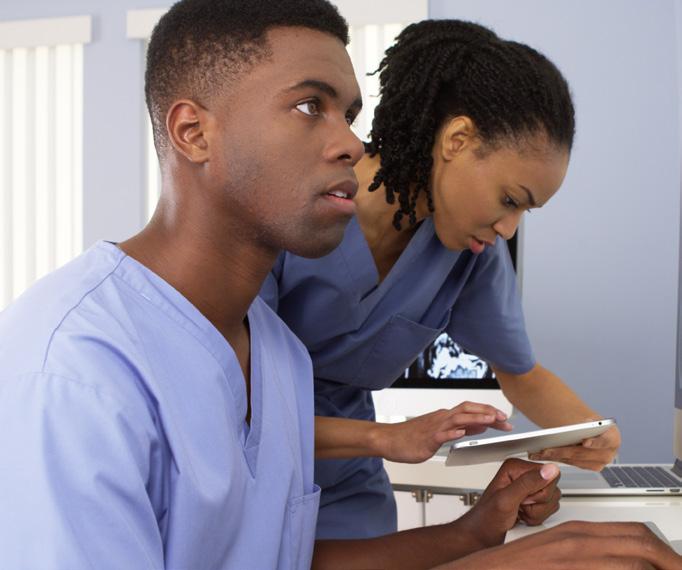

THE 2023 ASSOCIATES ARE:
David Adam, PhD The John Hopkins University
Stephanie Bennett, PhD Harvard Medical School
Xiuxiu He, PhD Memorial Sloan Kettering Cancer Center
Jun Hong, PhD MD Anderson Cancer Center
Stewart "Mac" Mein, PhD University of Pennsylvania
Jessica "Jess" Scholey, PhD
University of California San Francisco
Suman Shrestha, PhD MD Anderson Cancer Center
Cayla Wood, PhD MD Anderson Cancer Center
www.aapm.org
AAPM Southern California Chapter Norm Baily Awards and MedPhys Slam Meeting 2023

SCCAAPM CHAPTER REPORT

TheAAPM Southern California Chapter (SCCAAPM) held an exciting meeting on May 13, 2023, at the beautiful location of Irvine, CA, City of Hope Orange County, to celebrate the Norm Baily Awards and MedPhys Slam competition. Norman A. Baily (1915–1992) was a pioneer in medical physics, an individual who helped define the profession, and was equally adept in nuclear medicine, radiation oncology, and diagnostic imaging.

In 1986, in appreciation of his service to our organization and in the spirit of acknowledging young scientists in southern California, the SCCAAPM created the annual Norm Baily Award. There were 26 graduate students, residents, post-docs, medical physicists, and vendors who attended the meeting on-site, and more colleagues attended the meeting online.
Dr. Sherry Xiaoyu Liu, our education committee member, hosted the meeting. Dr. Chengyu Shi, the current chapter president, provided updates about the chapter and future meetings and chapter programs, such as creating a Telegram group for SCCAAPM and a mock exam for our young members. Dr. Percy Lee, Professor and Vice-Chair of Clinical Research and Medical Director of Orange County and Coastal Regions in the Department of Radiation Oncology at City of Hope National Medical Center, then presented a wonderful talk entitled “Early Clinical Outcomes for MR-guided Radiotherapy.”
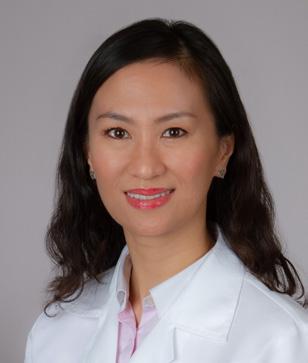

After that, we had an exciting Slam competition with three talented candidates from USC and UCLA. The board members and a couple of onsite professors voted and Spencer Welland from UCLA won and will represent SCCAAPM at the annual AAPM Slam competition.
After a half-hour coffee break, another exciting competition was held for the graduate students and residents/post-docs scientific presentations. Three graduate students from UCLA and three residents/post-docs from Cedars Sinai, UCSD, and UCLA participated in these competitions. All of them gave wonderful
www.aapm.org | 47 AAPM Newsletter | July/August 2023 Volume 48, No. 4
Chengyu Shi, PhD City of Hope
Sherry Xiao Yu Liu, PhD Kaiser Permanante
Zhilei Liu Shen, PhD University of Southern California
Maryam Bostani, PhD University of California Los Angeles
Slam competition winner Spencer Welland and Dr. Sherry Xiaoyu Liu
presentations. Pavitra Ramesh from UCLA won the graduate student competition and Michael Lauria from UCLA won the resident/post-doc competition. All the results were voted on by the board members onsite and online and verified onsite. Congratulations to the winners and all the participants.

Happy times are always short! The meeting ended at about 12:30 pm. After that, the SCCAAPM had a short board meeting to organize future events. Please review and follow up on the SCCAAPM website. ¢

48 | www.aapm.org AAPM Newsletter | July/August 2023 Volume 48, No. 4
SCCAAPM CHAPTER REPORT , Cont.
SCCAAPM Chapter Meeting group photo
For over 20 years, the AAPM Education & Research Fund has been a vital catalyst within medical physics in funding strategic programs such as seed grants for early-career researchers; matching support for clinical residency programs; and fellowships for PhD students. In addition, the Fund attracts undergraduates to the field and promotes diversity, and to-date has funded well over 100 grants, fellowships, and residencies.
Please join your fellow members in contributing to the Education & Research Fund. Together, we can ensure this valuable platform — and our field — remain vibrant and continue to prosper and grow. DONATE

ATTENTION VOTING MEMBERS! Educate yourself for the upcoming vote on proposed updates to AAPM membership classes:
SIMPLIFY | CHOOSE | FACILITATE focus on our future Annual Report 2021
https://www.aapm.org/announcements/2023ProposedUpdatesMembershipClasses.asp
NOW:
focus on our future
www.aapm.org/education/edfundintro.asp
1631 Prince Street, Alexandria, VA 22314 | p. 571-298-1300 • f. 571-298-1301 | aapm.org


































































 Emily Hirata, PhD | University of California San Francisco
Emily Hirata, PhD | University of California San Francisco

 Written on behalf of the Medical Physics Leadership Academy Committee
Written on behalf of the Medical Physics Leadership Academy Committee




 Cassandra
Cassandra




































